A Smithsonian magazine special report

Would Astronauts Survive an Interstellar Trip Through a Wormhole?
Well, it depends on your definition of “wormhole” …
Victoria Jaggard
:focal(780x399:781x400)/https://tf-cmsv2-smithsonianmag-media.s3.amazonaws.com/filer/79/9d/799dd088-1f15-47f6-84f7-360496649d8e/interstellar-equations.jpg)
In the space opera Interstellar , astronauts seeking to save humanity have found a lifeline: a wormhole that has mysteriously appeared next to Saturn. The tunnel through spacetime leads to a distant galaxy and the chance to find habitable planets that humans can colonize. The movie's wormhole is based on real physics from retired CalTech professor Kip Thorne , an astrophysics pioneer who also helped Carl Sagan design his wormhole for the novel Contact . The visualizations are stunning and are being hailed as some of the most accurate simulations of wormholes and black holes in film. But there is one aspect of plunging into an interstellar express that the film doesn't address: How do you survive the trip?
Although they didn't call it such, the original wormhole was the brainchild of Albert Einstein and his assistant Nathan Rosen. They were trying to solve Einstein's equations for general relativity in a way that would ultimately lead to a purely mathematical model of the entire universe, including gravity and the particles that make up matter. Their attempt involved describing space as two geometric sheets connected by "bridges," which we perceive as particles.
Another physicist, Ludwig Flamm, had independently discovered such bridges in 1916 in his solution to Einstein's equations. Unfortunately for all of them, this "theory of everything" didn't work out, because the theoretical bridges did not ultimately behave like real particles. But Einstein and Rosen's 1935 paper popularized the concept of a tunnel through the fabric of spacetime and got other physicists thinking seriously about the implications.

Princeton physicist John Wheeler coined the term "wormhole" in the 1960s when he was exploring the models of Einstein-Rosen bridges. He noted that the bridges are akin to the holes that worms bore through apples. An ant crawling from one side of the apple to another can either plod all the way around its curved surface, or take a shortcut through the worm's tunnel. Now imagine our three-dimensional spacetime is the skin of an apple that curves around a higher dimension called "the bulk." An Einstein-Rosen bridge is a tunnel through the bulk that lets travelers take a fast lane between two points in space. It sounds strange, but it is a legit mathematical solution to general relativity.
Wheeler realized that the mouths of Einstein-Rosen bridges handily match descriptions of what's known as a Schwarzschild black hole , a simple sphere of matter so dense that not even light can escape its gravitational pull. Ah-ha! Astronomers believe that black holes exist and are formed when the cores of exceedingly massive stars collapse in on themselves. So could black holes also be wormholes and thus gateways to interstellar travel? Mathematically speaking, maybe—but no one would survive the trip.
In the Schwarzschild model, the dark heart of a black hole is a singularity, a neutral, unmoving sphere with infinite density. Wheeler calculated what would happen if a wormhole is born when two singularities in far-flung parts of the universe merge in the bulk, creating a tunnel between Schwarzschild black holes. He found that such a wormhole is inherently unstable: the tunnel forms, but then it contracts and pinches off, leaving you once more with just two singularities. This process of growth and contraction happens so fast that not even light makes it through the tunnel, and an astronaut trying to pass through would encounter a singularity. That's sudden death, as the immense gravitational forces would rip the traveler apart.
"Anything or anyone that attempts the trip will get destroyed in the pinch-off!" Thorne writes in his companion book to the movie, The Science of Interstellar .
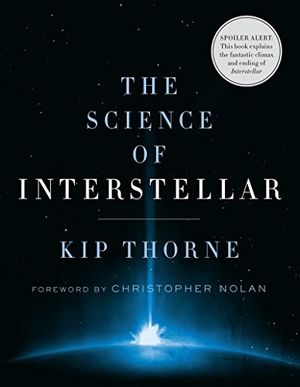
The Science of Interstellar
Amazon.com: The Science of Interstellar (9780393351378): Kip Thorne, Christopher Nolan: Books
There is an alternative: a rotating Kerr black hole, which is another possibility in general relativity. The singularity inside a Kerr black hole is a ring as opposed to a sphere, and some models suggest that a person could survive the trip if they pass neatly through the center of this ring like a basketball through a hoop. Thorne, however, has a number of objections to this notion. In a 1987 paper about travel via wormhole , he notes that the throat of a Kerr wormhole contains a region called a Cauchy horizon that is very unstable. The math says that as soon as anything, even light, tries to pass this horizon, the tunnel collapses. Even if the wormhole could somehow be stabilized, quantum theory tells us that the inside should be flooded with high-energy particles. Set foot in a Kerr wormhole, and you will be fried to a crisp.
The trick is that physics has yet to marry the classical rules of gravity with the quantum world, an elusive bit of mathematics that many researchers are trying to pin down. In one twist on the picture, Juan Maldacena at Princeton and Leonard Susskind at Stanford proposed that wormholes may be like the physical manifestations of entanglement, when quantum objects are linked no matter how far apart they are.
Einstein famously described entanglement as "spooky action at a distance" and resisted the notion. But plenty of experiments tell us that entanglement is real—it's already being used commercially to protect online communications, such as bank transactions. According to Maldacena and Susskind, large amounts on entanglement change the geometry of spacetime and can give rise to wormholes in the form of entangled black holes . But their version is no interstellar gateway.
"They are wormholes which do not allow you to travel faster than light," says Maldacena. "However, they can allow you to meet somebody inside, with the small caveat that they would both then die at a gravitational singularity."
OK, so black holes are a problem. What, then, can a wormhole possibly be? Avi Loeb at the Harvard-Smithsonian Center for Astrophysics says our options are wide open: "Since we do not yet have a theory that reliably unifies general relativity with quantum mechanics, we do not know of the entire zoo of possible spacetime structures that could accommodate wormholes."

There's still a hitch. Thorne found in his 1987 work that any type of wormhole that is consistent with general relativity will collapse unless it is propped open by what he calls "exotic matter" with negative energy. He argues that we have evidence of exotic matter thanks to experiments showing how quantum fluctuations in a vacuum seem to create negative pressure between two mirrors placed very close together. And Loeb thinks our observations of dark energy are further hints that exotic matter may exist.
"We observe that over recent cosmic history, galaxies have been running away from us at a speed that increases with time, as if they were acted upon by repulsive gravity," says Loeb. "This accelerated expansion of the universe can be explained if the universe is filled with a substance that has a negative pressure … just like the material needed to create a wormhole." Both physicists agree, though, that you'd need too much exotic matter for a wormhole to ever form naturally, and only a highly advanced civilization could ever hope to gather enough of the stuff to stabilize a wormhole.
But other physicists are not convinced. "I think that a stable, traversable wormhole would be very confusing and seems inconsistent with the laws of physics that we know," says Maldacena. Sabine Hossenfelder at the Nordic Institute for Theoretical Physics in Sweden is even more skeptical: "We have absolutely zero indication that this exists. Indeed it is widely believed that it cannot exist, for if it did the vacuum would be unstable." Even if exotic matter was available, traveling through it may not be pretty. The exact effects would depend on the curvature of spacetime around the wormhole and the density of the energy inside, she says. "It is pretty much as with black holes: too much tidal forces and you get ripped apart."
Despite his ties to the film, Thorne is also pessimistic that a traversable wormhole is even possible, much less survivable. "If they can exist, I doubt very much that they can form naturally in the astrophysical universe," he writes in the book. But Thorne appreciates that Christopher and Jonah Nolan, who wrote Interstellar , were so keen to tell a story that is grounded in science.
“The story is now essentially all Chris and Jonah's,” Thorne told Wired in an exclusive interview. “But the spirit of it, the goal of having a movie in which science is embedded in the fabric from the beginning—and it's great science—that was preserved.”
Get the latest Science stories in your inbox.
Victoria Jaggard | | READ MORE
Victoria Jaggard is the science editor for Smithsonian.com. Her writing has appeared in Chemical & Engineering News , National Geographic , New Scientist and elsewhere.
December 1, 2015
12 min read
Can Time Travelers Reach the Past via Wormholes?
Astronauts already skip ahead in time, but the laws of physics seem to forbid going backward—or do they?
By Tim Folger
The famous writer H. G. Wells published his first novel, The Time Machine , in 1895, just a few years before Queen Victoria's six-decade reign over the U.K. ended. An even more durable dynasty was also drawing to a close: the 200-year-old Newtonian era of physics. In 1905 Albert Einstein published his special theory of relativity, which upset Isaac Newton's applecart and, presumably to Wells's delight, allowed something that had been impossible under Newton's laws: time travel into the future. In Newton's universe, time was steady everywhere and everywhen. It never sped up. It never slowed down. But for Einstein, time was relative.
Time travel is not merely possible—it has already happened, though not exactly as Wells imagined. The biggest journey through time so far, according to J. Richard Gott, an astrophysicist at Princeton University, was taken by Sergei K. Krikalev. Over the course of his long career, which began in 1985, the Russian cosmonaut spent 803 days in space. As Einstein proved, time passes more slowly for objects in motion than for those at rest, so as Krikalev hurtled along at 17,885 miles an hour onboard the Mir space station, time did not flow at the same rate for him as it did on Earth. While in orbit, Krikalev aged 1/48 of a second less than his fellow earthlings. Put another way, he traveled 1/48 of a second into the future.
The time-travel effect becomes easier to see as distances stretch longer and speeds creep higher. If Krikalev left Earth in 2015 and made a round-trip to Betelgeuse—a star that is about 650 light-years from Earth—at 99.995 percent the speed of light, then by the time he returned to Earth he would be only 10 years older. Sadly, everyone he knew would be long dead because 1,000 years would have passed on Earth; it would be the year 3015. “Time travel to the future, we know we can do,” Gott says. “It's just a matter of money and engineering!”
On supporting science journalism
If you're enjoying this article, consider supporting our award-winning journalism by subscribing . By purchasing a subscription you are helping to ensure the future of impactful stories about the discoveries and ideas shaping our world today.
Jumping a few nanoseconds—or even a few centuries—into the future is relatively straightforward, practical challenges aside. But going backward in time is harder. Einstein's special theory of relativity forbade it. After another decade of work, Einstein unveiled his general theory of relativity, which finally lifted that restriction. How someone would actually travel back in time, however, is a vexing problem because the equations of general relativity have many solutions. Different solutions assign different qualities to the universe—and only some of the solutions create conditions that permit time travel into the past.
Whether any of those solutions describes our own universe is an open question, which raises even more profound puzzles: Just how much tweaking of fundamental physics would it take to allow backward time travel? Does the universe itself somehow prevent such journeys even if Einstein's equations do not rule them out? Physicists continue to speculate, not because they imagine time travel to the past will ever be practical but because thinking about the possibility has led to some surprising insights about the nature of the universe we live in—including, perhaps, how it came to be in the first place.
A new way of looking at time With his special theory of relativity, Einstein made time malleable in a way that must have pleased Wells, who presciently believed that we inhabit a universe in which three-dimensional space and time are knit together into a four-dimensional whole. Einstein arrived at his revolutionary results by exploring the implications of two fundamental ideas. First, he argued that even though all motion is relative, the laws of physics must look the same for everyone anywhere in the universe. Second, he realized that the speed of light must be similarly unchanging from all perspectives: if everyone sees the same laws of physics operating, they must also arrive at the same result when measuring the speed of light.
To make light a universal speed limit, Einstein had to jettison two commonsense notions: that all observers would agree on the measurement of a given length and that they would also agree on the duration of time's passage. He showed that a clock in motion, whizzing past someone at rest, would tick more slowly than a stationary clock at the person's side. And the length of a ruler moving swiftly by would shorten. Yet for anyone who was traveling at the same speed as the clock and ruler, the passage of time and the length of the ruler would appear normal.
At ordinary speeds, the time-and-space-distorting effects of special relativity are negligible. But for anything moving at a hefty fraction of the speed of light (relative to the observer), they are very real. For example, many experiments have confirmed that the decay rate of unstable particles called muons slows by an order of magnitude when they are traveling at close to the speed of light. The speeding muons, in effect, are minuscule time travelers—subatomic Krikalevs—hopping a few nanoseconds into the future.
Gödel's strange universe Those speedy clocks and rulers and muons are all racing forward in time. Can they be thrown into reverse? The first person to use general relativity to describe a universe that permits time travel into the past was Kurt Gödel, the famed creator of the incompleteness theorems, which set limits on the scope of what mathematics can and cannot prove. He was one of the towering mathematicians of the 20th century—and one of the oddest. His many foibles included a diet of baby food and laxatives.
Gödel presented this model universe as a gift to Einstein on his 70th birthday. The universe Gödel described to his skeptical friend had two unique properties. It rotated, which provided centrifugal force that prevented gravity from crunching together all the matter in the cosmos, and thus created the stability Einstein demanded of any cosmic model. But it also allowed for time travel into the past, which made Einstein deeply uneasy. In Gödel's cosmos, space travelers could set out and eventually reach a point in their own past, as if the travelers had completed a circuit around the surface of a giant cylinder. Physicists call these trajectories in spacetime “closed timelike curves.”
A closed timelike curve is any path through spacetime that loops back on itself. In Gödel's rotating cosmos, such a curve would circle around the entire universe, like a latitude line on Earth's surface. Physicists have concocted a number of different types of closed timelike curves, all of which allow travel to the past, at least in theory. A journey along any of them would be disappointingly ordinary, however. Through the portholes of your spaceship, you would see stars and planets—all the usual sights of deep space. More important, time—as measured by your own clocks—would tick forward in the usual way; the hands of a clock would not start spinning backward even though you would be traveling to a location in spacetime that existed in your past.
“Einstein was already aware of the possibility of closed timelike curves back in 1914,” says Julian Barbour, an independent theoretical physicist who lives near Oxford, England. As Barbour recalls, Einstein said, “My intuition strives most vehemently against this.” The curves' existence would create all kinds of problems with causality—how can the past be changed if it has already happened? And then there is the hoary grandfather paradox: What happens to a time traveler who kills Granddad before Granddad meets Grandma? Would the demented, now parentless traveler ever be born?
Fortunately for fans of causality, astronomers have found no evidence that the universe is rotating. Gödel himself apparently pored over catalogs of galaxies, looking for clues that his theory might be true. Gödel might not have devised a realistic model of the universe, but he did prove that closed timelike curves are completely consistent with the equations of general relativity. The laws of physics do not rule out traveling to the past.
An annoying possibility Over the past few decades cosmologists have used Einstein's equations to construct a variety of closed timelike curves. Gödel conjured an entire universe that allowed them, but more recent enthusiasts have warped spacetime only within parts of our universe.
In general relativity, planets, stars, galaxies and other massive bodies warp spacetime. Warped spacetime, in turn, guides the motions of those massive bodies. As the late physicist John Wheeler put it, “Spacetime tells matter how to move; matter tells spacetime how to curve.” In extreme cases, spacetime might bend enough to create a path from the present back to the past.
Physicists have proposed some exotic mechanisms to create such paths. In a 1991 paper, Gott showed how cosmic strings—infinitely long structures thinner than an atom that may have formed in the early universe—would allow closed timelike curves where two strings intersected. In 1983 Kip S. Thorne, a physicist at the California Institute of Technology, began to explore the possibility that a type of closed timelike curve called a wormhole—a kind of tunnel joining two different locations in spacetime—might allow for time travel into the past. “In general relativity, if you connect two different regions of space, you're also connecting two different regions of time,” says Sean M. Carroll, a colleague of Thorne's at Caltech.
The entrance into a wormhole would be spherical—a three-dimensional entrance into a four-dimensional tunnel in spacetime. As is the case with all closed timelike curves, a trip through a wormhole would be “like any other journey,” Carroll says. “It's not that you disappear and are reassembled at some other moment of time. There is no respectable theory where that kind of science-fiction time travel is possible.” For all travelers, he adds, “no matter what they do, time flows forward at one second per second. It's just that your local version of ‘forward’ might be globally out of sync with the rest of the universe.”
Although physicists can write equations that describe wormholes and other closed timelike curves, all the models have serious problems. “Just to get a wormhole in the first place, you need negative energy,” Carroll says. Negative energy is when the energy in a volume of space spontaneously fluctuates to less than zero. Without negative energy, a wormhole's spherical entrance and four-dimensional tunnel would instantaneously implode. But a wormhole held open by negative energy “seems to be hard, probably impossible,” Carroll says. “Negative energies seem to be a bad thing in physics.”
Even if negative energy kept a wormhole open, just when you would be on the verge of turning that into a time machine, “particles would be moving through the wormhole, and every particle would loop back around an infinite number of times,” Carroll says. “That leads to an infinite amount of energy.” Because energy deforms spacetime, the entire thing would collapse into a black hole—an infinitely dense point in spacetime. “We're not 100 percent sure that that happens,” Carroll says. “But it seems to be a reasonable possibility that the universe is actually preventing you from making a time machine by making a black hole instead.”
Unlike black holes, which are a natural consequence of general relativity, wormholes and closed timelike curves in general are completely artificial constructs—a way of testing the bounds of the theory. “Black holes are hard to avoid,” Carroll says. “Closed timelike curves are very hard to make.”
Even if wormholes are physically implausible, it is significant that they fit in with the general theory of relativity. “It's very curious that we can come so close to ruling out the possibility of time travel, yet we just can't do it. I also think that it's annoying,” Carroll says, exasperated that Einstein's beautiful theory might allow for something so seemingly implausible. But by contemplating that annoying possibility, physicists may gain a better understanding of the kind of universe we live in. And it may be that if the universe did not permit backward time travel, it never would have come into existence.
Did the universe create itself? General relativity describes the universe on the largest scales. But quantum mechanics provides the operating manual for the atomic scale, and it offers another possible venue for closed timelike curves—one that gets at the origin of the universe.
“On a very small scale (10−30 centimeter) you might expect the topology of spacetime to fluctuate, and random fluctuations might give you closed timelike curves if nothing fundamental prevents them,” says John Friedman, a physicist at the University of Wisconsin–Milwaukee. Could those quantum fluctuations somehow be magnified and harnessed as time machines? “There's certainly no formal proof that you can't have macroscopic closed timelike curves,” Friedman says. “But the community of people who have looked at these general questions would bet pretty heavily against it.”
There is no doubt that the creation of a loop in spacetime on either a quantum scale or a cosmic one would require some very extreme physics. And the most likely place to expect extreme physics, Gott says, is at the very beginning of the universe.
In 1998 Gott and Li-Xin Li, an astrophysicist now at Peking University in China, published a paper in which they argued that closed timelike curves were not merely possible but essential to explain the origin of the universe. “We investigated the possibility of whether the universe could be its own mother—whether a time loop at the beginning of the universe would allow the universe to create itself,” Gott says.
Just as in standard big bang cosmology, Gott and Li's universe “starts” with a bout of inflation, where an all-pervasive energy field drove the universe's initial expansion. Many cosmologists now believe that inflation gave rise to countless other universes besides our own. “Inflation is very hard to stop once it gets started,” Gott says. “It makes an infinitely branching tree. We're one of the branches. But you have to ask yourself, Where did the trunk come from? Li-Xin Li and I said it could be that one of the branches just loops around and grows up to be the trunk.”
A simple two-dimensional sketch of Gott and Li's self-starting universe looks like the number “6,” with the spacetime loop at the bottom and our present-era universe as the top stem. A burst of inflation, Gott and Li theorized, allowed the universe to escape from the time loop and expand into the cosmos we inhabit today.
It is difficult to contemplate the model, but its main appeal, Gott says, is that it eliminates the need for creating a universe out of nothing. Yet Alexander Vilenkin of Tufts University, Stephen Hawking of the University of Cambridge and James Hartle of the University of California, Santa Barbara, have proposed models in which the universe does indeed arise out of nothing. According to the laws of quantum mechanics, empty space is not really empty but is filled with “virtual” particles that spontaneously pop into and out of existence. Hawking and his colleagues theorized that the universe burst into being from the same quantum-vacuum stew. But in Gott's view, the universe is not made out of nothing; it is made out of something—itself.
A cosmic chess game For now, there is no way to test whether any of those theories might actually explain the origin of the universe. The famed physicist Richard Feynman compared the universe to a great chess game being played by the gods. Scientists, he said, are trying to understand the game without knowing the rules. We watch as the gods move a pawn one space forward, and we learn a rule: pawns always move one space forward. But what if we never saw the opening of a game, when a pawn can move two spaces forward? We might also assume, mistakenly, that pawns always remain pawns—that they never change their identity—until we see a pawn transformed into a queen.
“You would say that's against the rules,” Gott says. “You can't change your pawn into a queen. Well, yes, you can! You just never saw a game that extreme before. Time-travel research is like that. We're testing the laws of physics by looking at extreme conditions. There's nothing logically impossible about time travel to the past; it's just not the universe we're used to.” Turning a pawn into a queen could be part of the rules of relativity.
Such wildly speculative ideas may be closer to philosophy than to physics. But for now, quantum mechanics and general relativity—powerful, counterintuitive theories—are all we have to figure out the universe. “As soon as people start trying to bring quantum theory and general relativity into this, the first thing to say is that they really have no idea what they're doing,” says Tim Maudlin, a philosopher of science at New York University. “It's not really rigorous mathematics. It's one piece of mathematics that sort of looks like general relativity and another little piece of mathematics that sort of looks like quantum theory, mixed together in some not entirely coherent way. But this is what people have to do because they honestly don't know how to go forward in a way that makes sense.”
Will some future theory eliminate the possibility of time travel into the past? Or will the universe again turn out to be far stranger than we imagine? Physics has advanced tremendously since Einstein redefined our understanding of time. Time travel, which existed only in the realm of fiction for Wells, is now a proved reality, at least in one direction. Is it too hard to believe that some kind of symmetry exists in the universe, allowing us to travel backward in time? When I put the question to Gott, he replies with an anecdote:
“There's a story where Einstein was talking to a guy. The guy pulled a notebook out and scribbled something down. Einstein says, ‘What's that?’ The guy says, ‘A notebook. Whenever I have a good idea, I write it down.’ Einstein says, ‘I've never had any need for a notebook; I've only had three good ideas.’”
Gott concludes: “I think we're waiting for a new good idea.”
Tim Folger is a freelance journalist who writes for National Geographic , Discover , and other national publications.
- Cast & crew
- User reviews
Interstellar

When Earth becomes uninhabitable in the future, a farmer and ex-NASA pilot, Joseph Cooper, is tasked to pilot a spacecraft, along with a team of researchers, to find a new planet for humans. When Earth becomes uninhabitable in the future, a farmer and ex-NASA pilot, Joseph Cooper, is tasked to pilot a spacecraft, along with a team of researchers, to find a new planet for humans. When Earth becomes uninhabitable in the future, a farmer and ex-NASA pilot, Joseph Cooper, is tasked to pilot a spacecraft, along with a team of researchers, to find a new planet for humans.
- Christopher Nolan
- Jonathan Nolan
- Matthew McConaughey
- Anne Hathaway
- Jessica Chastain
- 5.7K User reviews
- 488 Critic reviews
- 74 Metascore
- 44 wins & 148 nominations total

- Murph (10 Yrs.)

- Murph (Older)

- Tom (15 Yrs.)

- School Principal

- (as Francis Xavier McCarthy)

- Professor Brand

- All cast & crew
- Production, box office & more at IMDbPro
Jessica Chastain Through the Years

More like this

Did you know
- Trivia To create the wormhole and black hole, Dr. Kip Thorne collaborated with Visual Effects Supervisor Paul J. Franklin and his team at Double Negative. Thorne provided pages of deeply sourced theoretical equations to the team, which then created new CGI software programs based on these equations to create accurate computer simulations of these phenomena. Some individual frames took up to one hundred hours to render, and ultimately the whole CGI program reached to eight hundred terabytes of data. The resulting visual effects provided Thorne with new insight into the effects of gravitational lensing and accretion disks surrounding black holes, and led to him writing two scientific papers, one for the astrophysics community, and one for the computer graphics community.
- Goofs Two characters sustain a fall from an ice plateau, on a steep ice ramp, onto a shadowy ice platform. A moment later, a panoramic shot shows them fighting on a very different place.
Cooper : We used to look up at the sky and wonder at our place in the stars. Now we just look down, and worry about our place in the dirt.
- Crazy credits The Warner Bros, Paramount, Syncopy and Legendary Pictures logos are brown and dusty, representing Earth's arid dry state in the film.
- Alternate versions The 70mm IMAX version is two minutes shorter than the regular 70mm, Digital IMAX, 35mm, and digital projection versions. This is because the end credits are played in an abbreviated slide-show form (rather than scrolling from bottom to top), due to the size capacity of the IMAX platters, which can hold a maximum of 167 minutes of film.
- Connections Featured in Trailer Failure: Interstellar (2013)
- Soundtracks Do Not Go Gentle Into that Good Night (uncredited) Written by Dylan Thomas
User reviews 5.7K
- Jared_Andrews
- Apr 13, 2016
Exceptional Robots on Film & TV

- How long is Interstellar? Powered by Alexa
- What wouldve happened if they went to edmunds planet first. ?
- Why did Earth change its history books to claim that the Apollo missions to the Moon were faked?
- How did Cooper figure out NASA's location?
- November 7, 2014 (United States)
- United States
- United Kingdom
- Official Facebook
- Official Twitter
- Flora's Letter
- Paramount Pictures
- Warner Bros.
- Legendary Entertainment
- See more company credits at IMDbPro
- $165,000,000 (estimated)
- $188,020,017
- $47,510,360
- Nov 9, 2014
- $733,202,212
Technical specs
- Runtime 2 hours 49 minutes
- Dolby Digital
- IMAX 6-Track
- Dolby Surround 7.1
Related news
Contribute to this page.
- IMDb Answers: Help fill gaps in our data
- Learn more about contributing
More to explore

Recently viewed
Subscribe or renew today
Every print subscription comes with full digital access
Science News
We could get messages back from spacecraft sent through a wormhole.
A simulation of these theoretical cosmic tunnels reveals wormholes don’t snap shut instantly

A spaceship diving into a wormhole (illustrated) is never returning, but it could theoretically send back video from the other side before the hole closes behind it.
gremlin/E+/Getty
Share this:
By James R. Riordon
January 3, 2023 at 9:00 am
If you ever happen to fall through a wormhole in space, you won’t be coming back. It will snap shut behind you. But you may have just enough time to send a message to the rest of us from the other side, researchers report in the Nov. 15 Physical Review D .
No one has yet seen a wormhole , but theoretically they could provide shortcuts to distant parts of the universe, or to other universes entirely, if they exist ( SN: 7/27/17 ). Physicists have long known that one of the most commonly studied types of wormholes would be extremely unstable and would collapse if any matter entered it. It wasn’t clear, though, just how fast that might happen or what it means for something, or someone, heading into it.
Now, a new computer program shows how one type of wormhole would respond when something travels through it.
“You build a probe and you send it through” in the wormhole simulation, says Ben Kain, a physicist at the College of the Holy Cross in Worcester, Mass. “You’re not necessarily trying to get it to come back, because you know the wormhole is going to collapse — but could a light signal get back in time before a collapse? And we found that it is possible.”
Prior studies of wormholes have concluded that the cosmic passageways could potentially stay open for repeated trips back and forth, Kain says, provided they’re supported by a form of matter that’s so exotic it’s called “ghost matter.”
Theoretically, ghost matter responds to gravity in exactly the opposite way to normal matter. That is, a ghost matter apple would fall up from a tree branch instead of down. While allowed by Einstein’s theory of general relativity , ghost matter almost certainly doesn’t exist in reality, Kain says ( SN: 2/3/21) .
Nevertheless, Kain simulated ghost matter traveling through a wormhole and found that it caused the hole to expand as expected, rather than collapsing.
It was a different story with anything made of normal matter; that would trigger a collapse that pinches the hole closed and leaves something resembling a black hole behind, Kain’s simulation confirmed. But it would happen slowly enough for a fast-moving probe to transmit light-speed signals back to our side just before the wormhole completely closes.
Kain doesn’t imagine ever sending humans through a wormhole, if such things are ever found. “Just the capsule and a video camera. It’s all automated,” he says. It’ll be a one-way trip, “but we can at least get some video seeing what this device sees.”
The idea should be approached with a fair bit of skepticism, says physicist Sabine Hossenfelder of the Munich Center for Mathematical Philosophy. “[It] requires one to postulate the existence of [things] that for all we know do not exist…. Lots of things you can do mathematically have nothing to do with reality.”
Still, Kain says, it’s a valuable effort that might reveal ways to make wormholes that don’t rely on ghost matter to stay open long enough for us to travel back and forth throughout the universe or beyond.
More Stories from Science News on Physics

Scientists developed a sheet of gold that’s just one atom thick

Newfound ‘altermagnets’ shatter the magnetic status quo

Separating science fact from fiction in Netflix’s ‘3 Body Problem’

Physicists take a major step toward making a nuclear clock

During a total solar eclipse, some colors really pop. Here’s why

A teeny device can measure subtle shifts in Earth’s gravitational field

Timbre can affect what harmony is music to our ears

50 years ago, superconductors were warming up
Subscribers, enter your e-mail address for full access to the Science News archives and digital editions.
Not a subscriber? Become one now .
We have completed maintenance on Astronomy.com and action may be required on your account. Learn More

- Login/Register
- Solar System
- Exotic Objects
- Upcoming Events
- Deep-Sky Objects
- Observing Basics
- Telescopes and Equipment
- Astrophotography
- Space Exploration
- Human Spaceflight
- Robotic Spaceflight
- The Magazine
If wormholes exist, could we really travel through them?
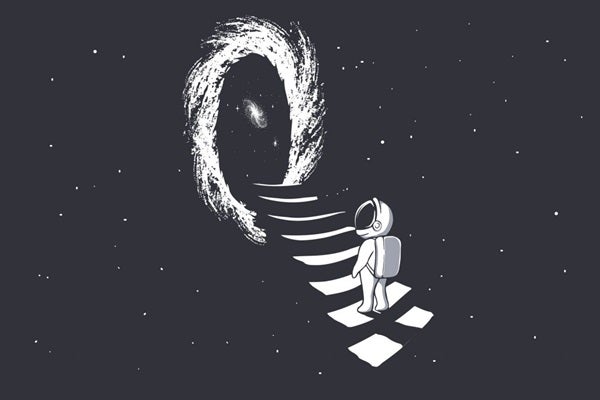
But wormholes also present the perfect way for writers to get around that pesky speed of light, the universe’s speed limit and impediment to fast travel through the cosmos. If characters in science fiction aren’t taking months or years to travel between worlds, a wormhole is likely the reason.
Too bad, then, that as far as we know, the things don’t exist.
Bringing the universe to your door. We’re excited to announce Astronomy magazine’s new Space and Beyond subscription box – a quarterly adventure, curated with an astronomy-themed collection in every box. Learn More >> . Historical Holes
Oh, wormholes could exist. We just don’t know whether they actually do . Or, for that matter, if they’d be useful to us as potential shortcuts.
But ever since Albert Einstein published his general theory of relativity , we’ve had the mathematical language for describing and imagining these fantastical structures . Back then, though, scientists referred to them as “one-dimensional tubes” and simply “bridges” — in fact, the term “ Einstein-Rosen bridge ” is still used semi-interchangeably with “wormhole” (the “Rosen” being Israeli physicist Nathan Rosen ).
It was American physicist John Wheeler who coined the vermicular vernacular in a 1957 Annals of Physics paper : “This analysis forces one to consider situations,” he wrote, “where there is a net flux of lines of force, through what topologists would call ‘a handle’ of the multiply-connected space, and what physicists might perhaps be excused for more vividly terming a ‘wormhole’.”
Tantalizing Physics
It’s a lucky thing, because that vivid name helps describe just what the heck we’re talking about. The curvature of space and lines of force might not mean much to most people, but who can’t imagine a worm eating its way through an apple or piece of timber? The resulting tunnel, connecting one part of the surface with another more distant part, is the perfect metaphor for something that can connect otherwise remote locations in the universe.
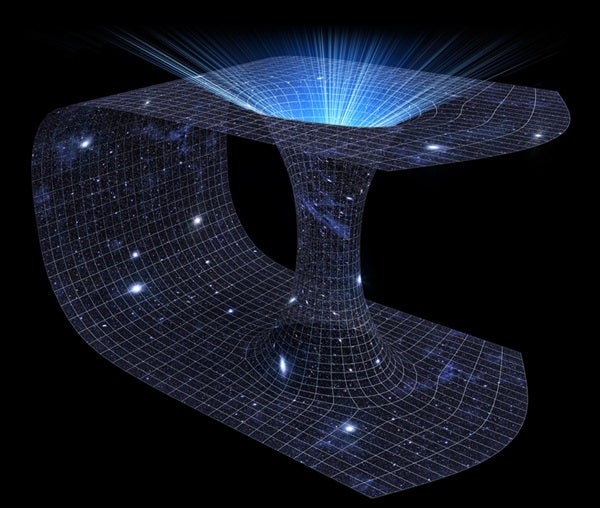
Wormholes, thus, are the perfect way to bypass Einstein’s speed limit, and get your heroes and villains to travel the galaxy in a reasonable time frame. Plus, they allow for the element of time travel to enter the story, all without breaking any laws of physics.
So, the real question is: Can actual people take advantage of wormholes too? The answer is… maybe?
Wither Wormholes?
The first problem for any explorer determined to survey a wormhole is simply finding one. While Einstein’s work says they can exist, we don’t currently know of any. They may actually be impossible after all, forbidden by some deeper physics that the universe obeys, but we haven’t discovered.
The second issue is that, despite years of research, scientists still aren’t really sure how wormholes would work. Can any technology ever create and manipulate them , or are they simply a part of the universe? Do they stay open forever, or are they only traversable for a limited time? And perhaps most significantly, are they stable enough to allow for human travel?
The answer to all of these: We just don’t know.
But that doesn’t mean scientists aren’t working on it. Despite the lack of actual wormholes to study, researchers can still model and test Einstein’s equations. NASA’s conducted legitimate wormhole research for decades , and a team described just this year how wormhole-based travel might be more feasible than previously thought.
That research concerned one of the most popular conceptions of wormholes, with black holes serving as one of the openings. But black holes are famously dangerous , possibly stretching apart anyone who approaches too close. It turns out, though, that some black holes might allow objects to pass through relatively easily. This would allow a traveler to explore the space beyond, and thus eliminate one of the biggest hurdles to entering such a wormhole. But again, that’s only if they exist in the first place.
So, until we either find an actual wormhole to study, or realize that they can’t help us explore the universe, we’ll have to do it the old fashioned way: By taking rockets the long way around, and taking our minds on fictional adventures.
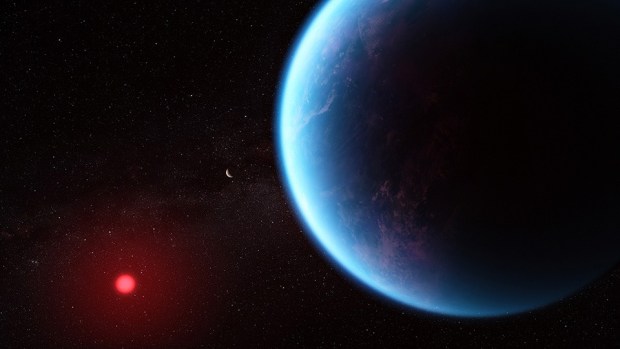
Possible hints of life found on exoplanet K2-18b – how excited should we be?
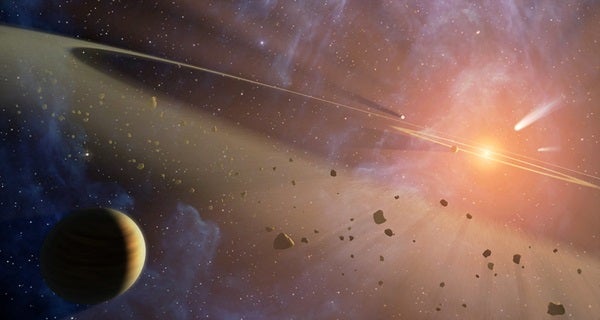
What happens if we detect alien life?
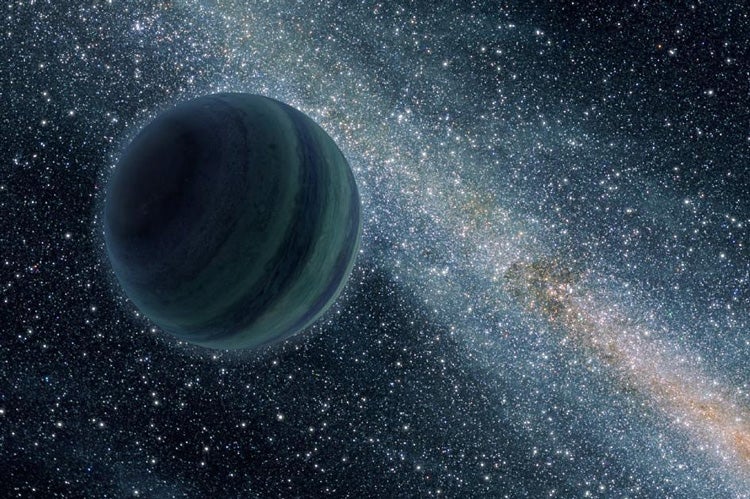
Does Planet Nine exist? The new evidence says yes.

How Markarian 205 nearly broke the universe: This Week in Astronomy with Dave Eicher
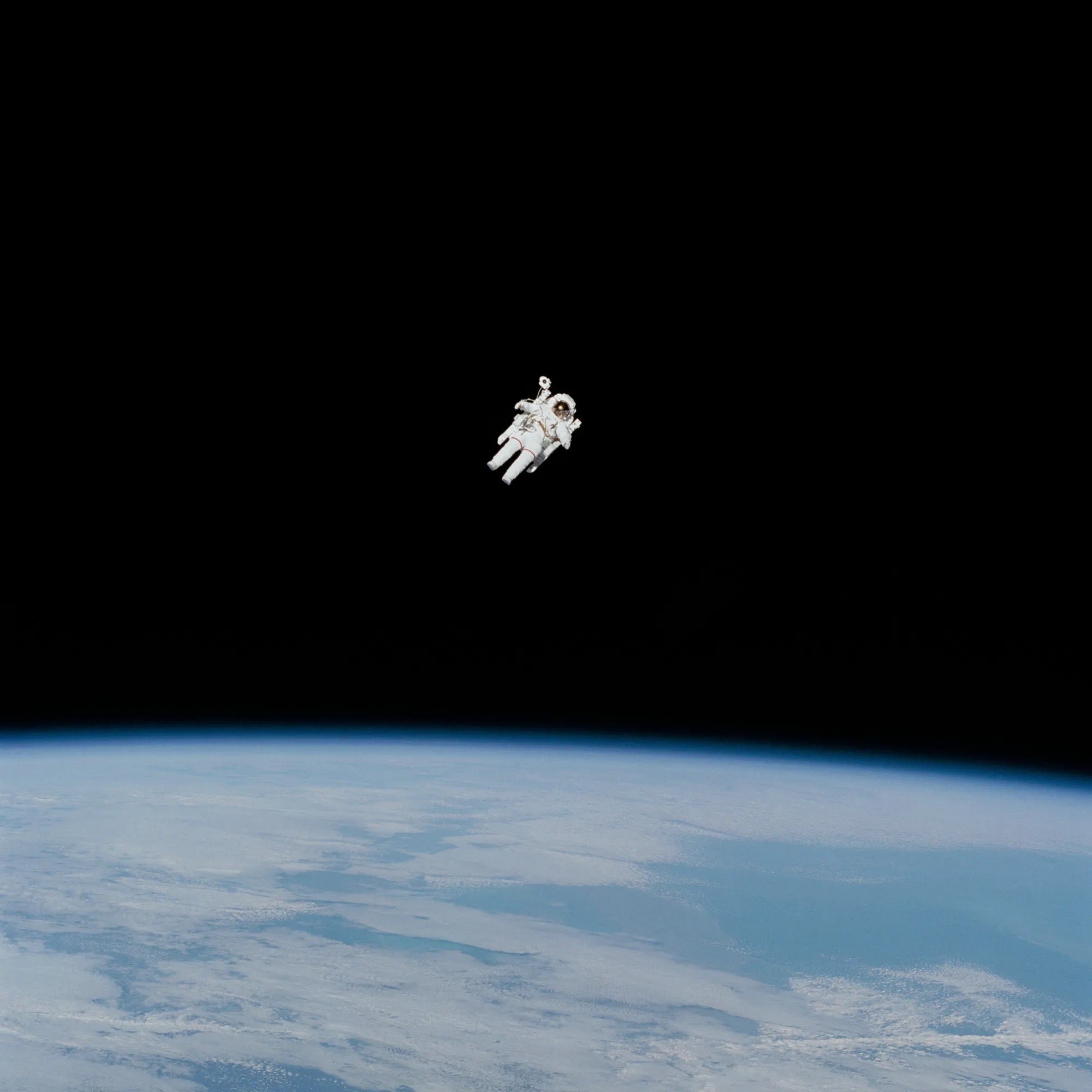
Astronauts have a surprising ability to gauge distances in space
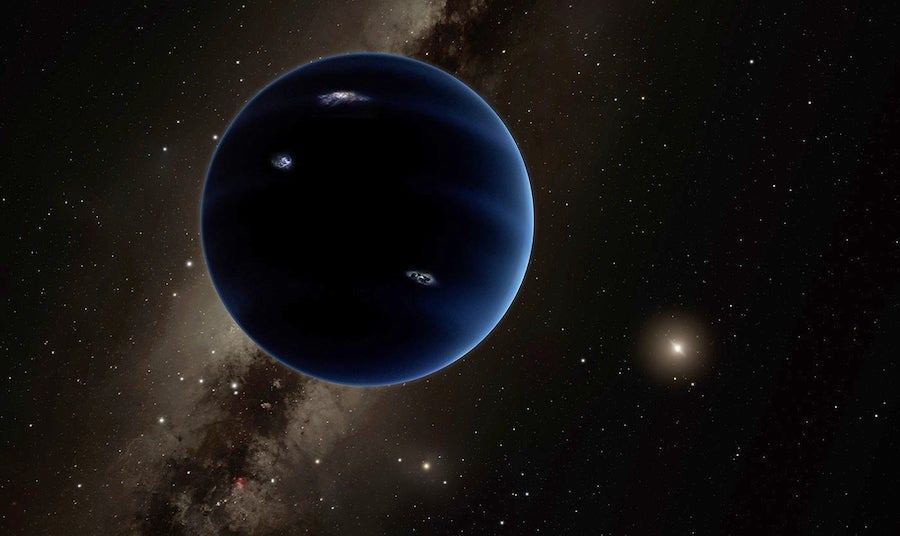
Could we find Planet X using JWST?
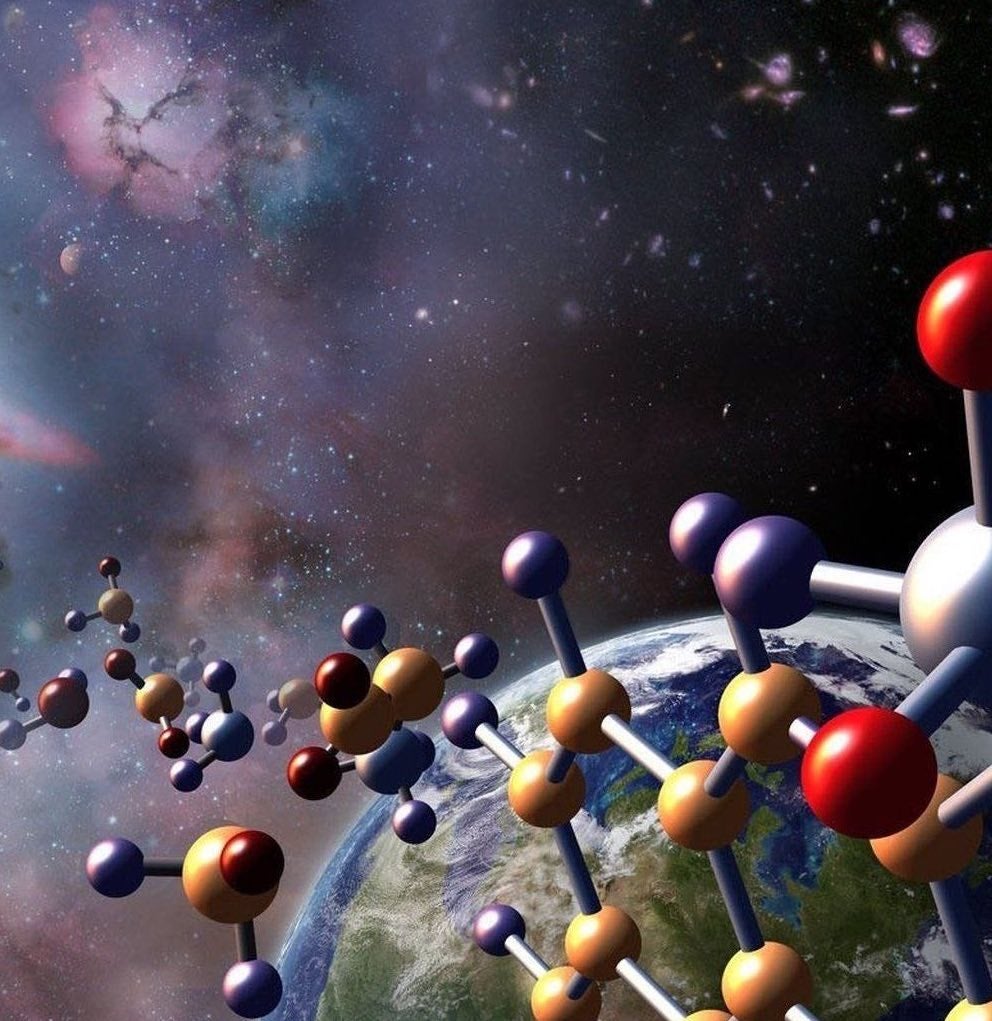
Which came first, galaxies or black holes? This is the plan to find out

2024 Full Moon calendar: Dates, times, types, and names
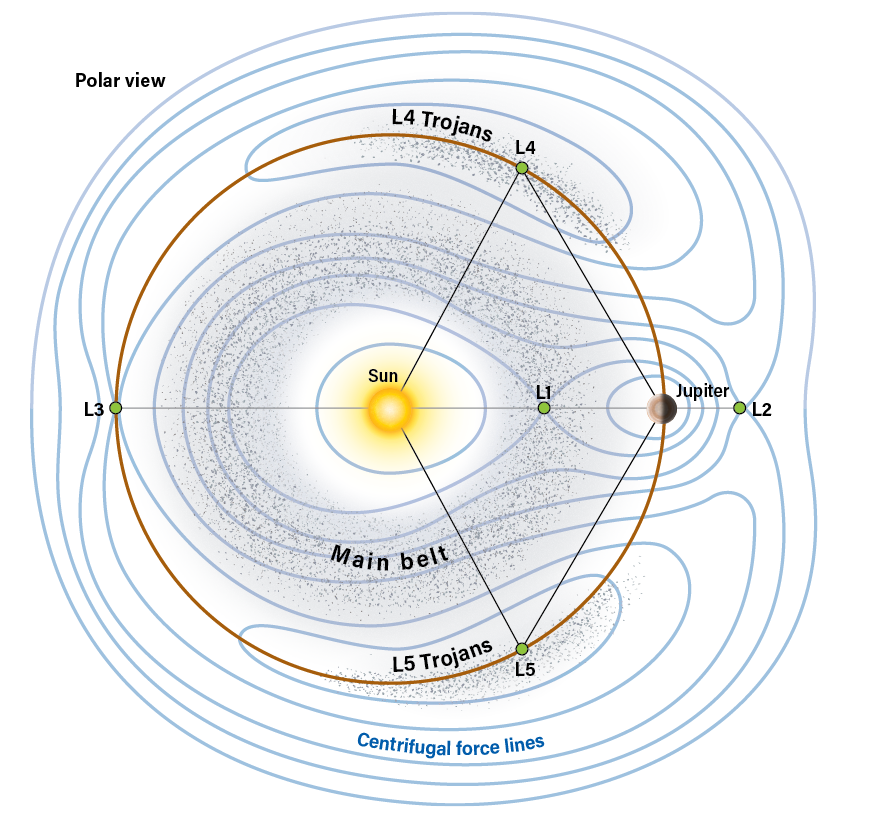
How closely packed are Jupiter’s Trojan asteroids?
- Today's news
- Reviews and deals
- Climate change
- 2024 election
- Fall allergies
- Health news
- Mental health
- Sexual health
- Family health
- So mini ways
- Unapologetically
- Buying guides
Entertainment
- How to Watch
- My watchlist
- Stock market
- Biden economy
- Personal finance
- Stocks: most active
- Stocks: gainers
- Stocks: losers
- Trending tickers
- World indices
- US Treasury bonds
- Top mutual funds
- Highest open interest
- Highest implied volatility
- Currency converter
- Basic materials
- Communication services
- Consumer cyclical
- Consumer defensive
- Financial services
- Industrials
- Real estate
- Mutual funds
- Credit cards
- Balance transfer cards
- Cash back cards
- Rewards cards
- Travel cards
- Online checking
- High-yield savings
- Money market
- Home equity loan
- Personal loans
- Student loans
- Options pit
- Fantasy football
- Pro Pick 'Em
- College Pick 'Em
- Fantasy baseball
- Fantasy hockey
- Fantasy basketball
- Download the app
- Daily fantasy
- Scores and schedules
- GameChannel
- World Baseball Classic
- Premier League
- CONCACAF League
- Champions League
- Motorsports
- Horse racing
- Newsletters
New on Yahoo
- Privacy Dashboard
Judge denies mistrial request over Stormy Daniels testimony at hush money trial
The science of 'interstellar': black holes, wormholes and space travel.
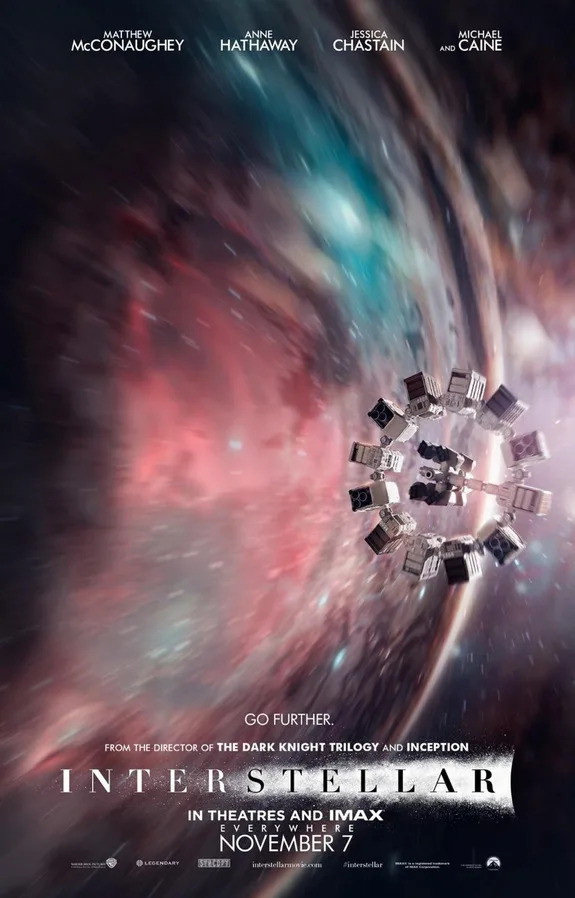
The sci-fi epic "Interstellar" is just a movie, but it throws a lot of science on the screen for space geeks to sink their teeth into.
" Interstellar ," which opened in theaters across the United States on Friday (Nov. 7), delves into black holes and wormholes, and it touches down on more than one alien planet. The film apparently takes its science seriously; renowned theoretical physicist Kip Thorne served as an adviser and executive producer on "Interstellar."
Here's a look at some of the space-science concepts that play key roles in the film, which was directed by Christopher Nolan and stars Matthew McConaughey, Anne Hathaway, Jessica Chastain and Michael Caine. Caution: Some spoilers ahead. [ 'Interstellar': A Space Epic in Pictures ]
Journey through a wormhole
"Interstellar" is set at some nebulous point in the not-too-distant future, when global crop failures threaten humanity with extinction. So a small band of explorers, led by a pilot-turned-farmer named Cooper (McConaughey), blasts off to search for an exoplanet that could serve as a new home for the human race.
The astronauts are aided in their quest by a wormhole — a sort of tunnel that allows relatively quick travel between widely separated parts of the universe — which had mysteriously appeared near Saturn some years before. Cooper steers the pioneers' ship, called Endurance, through the wormhole into a planet-rich portion of a faraway galaxy.
Though wormholes are a favored sci-fi trope, nobody knows whether or not they actually exist. According to Einstein's theory of general relativity, they are possible, but no sign of them has ever been spotted.
Furthermore, scientists say, a wormhole would likely collapse quickly unless it was propped open using some kind of negative-energy matter. So the big wormhole in "Interstellar" would require some serious and exotic engineering work — but I'll stop here, so I don't give too much away about the film.
The "Interstellar" visual-effects team used equations provided by Thorne to come up with their representation of the wormhole, depicting its entrance as a shimmering sphere — just as it likely would look in real life, Thorne said.
"Neither wormholes nor black holes have been depicted in any Hollywood movie in the way that they actually would appear," Thorne said recently in an "Interstellar" science video produced by Wired magazine . "This is the first time the depiction began with Einstein's general relativity equations."
A gorgeous black hole
Much of the action in "Interstellar" revolves around a giant black hole , which Cooper and his crewmates call "Gargantua." Thorne said he and the visual-effects crew took a great deal of care to depict the light-gobbling monster accurately.
The on-screen result is an exotic object that twists its infalling disk of dust and gas into complex shapes, with the overall effect further complicated by gravitational lensing — a real astronomical phenomenon in which a massive foreground object (such as a black hole) warps the light emitted by stars and other bodies located much farther away. [ Images: Black Holes of the Universe ]
The collaboration between Thorne and the "Interstellar" visual-effects people was so successful that it will extend into the scientific literature, the physicist said.
"We're going to write several technical papers about this — one aimed at the astrophysics community, and then something for the computer-graphics community — saying, 'Here are some things we've discovered about gravitational lensing by rapidly spinning black holes that we never knew before,'" Thorne said in the Wired video.
A few quibbles
In the movie, however, Cooper and his crew spend some time in close proximity to the black hole, which strains credulity.
The astronauts would likely be killed by the energetic radiation thrown off by the superhot disk of material circling Gargantua, Roberto Trotta, an astrophysicist at Imperial College London, noted in an article for the British newspaper The Guardian . Or they'd be "spaghettified" by the intense gravitional pull, which would be much stronger at one end of their bodies than the other, Trotta added.
And that's not the only issue. The astronauts land on a world that orbits very close to Gargantua — so close that, as the film depicts it, for every hour spent on the exoplanet's surface, seven years elapse on Earth. Such "time dilation" does indeed occur in the presence of gravitational fields, but there's no way it could be so extreme, according to Trotta.
"You would need such a strong gravitational field that you need to be close to what is called the Schwarzschild radius of the object — essentially the event horizon of a black hole," he wrote in The Guardian. (The event horizon is the point beyond which nothing, not even light, can escape a black hole's clutches.) "There is simply no planet that can have this kind of gravity, and if you tried to land on the surface, it would be so strong it would crush you. The numbers simply do not work."
In fact, a planet so close to a black hole could not even exist, Trotta observed: Tidal forces generated by the black hole's immense gravity would tear the planet apart.
A visual spectacle
Such details will rankle some filmgoers, while other folks won't mind suspending their disbelief. But most people who see "Interstellar" will probably agree that it's a stunning visual spectacle.
One of the alien planets depicted in the film, for example, is a water world featuring mysterious gigantic waves, while another is a frigid realm whose clouds are frozen solid. These worlds are gorgeously rendered, as are the many spaceflight sequences throughout the movie.
The spaceships in "Interstellar" are also nicely conceived and designed. Endurance is a ring-shaped vehicle consisting of 12 boxy modules, some of which can be shuttled to the surface of an exoplanet to set up a base. The mothership carries two heavy-lift "landers" to perform this work, as well as two more-agile "Rangers," which the crew uses for planetary exploration.
And Endurance rotates 5.6 times per minute to generate Earth-equivalent gravity aboard the ship — a detail the sticklers in the audience will doubtless appreciate.
Follow Mike Wall on Twitter @michaeldwall and Google+ . Follow us @Spacedotcom , Facebook or Google+ . Originally published on Space.com.
8 Science Fiction Movies to Watch in 2014
Final 'Interstellar' Trailer Reveals Dangers Of Exploring Alien Planets
'Interstellar' Trailer Reveals Potentially Habitable Worlds | Video
Copyright 2014 SPACE.com , a TechMediaNetwork company. All rights reserved. This material may not be published, broadcast, rewritten or redistributed.
Recommended Stories
Timberwolves coach chris finch calls jamal murray's heat-pack toss on court 'inexcusable and dangerous'.
Murray made a bad night on the court worse during a moment of frustration on the bench.
Former NBA guard Darius Morris dies at 33
Former NBA guard Darius Morris has died at the age of 33. He played for five teams during his four NBA seasons. Morris played college basketball at Michigan.
The FDIC change that leaves wealthy bank depositors with less protection
Affluent Americans may want to double-check how much of their bank deposits are protected by government-backed insurance. The rules governing trust accounts just changed.
Phil Mickelson on the majors: 'What if none of the LIV players played?'
Phil Mickelson hints that big changes could be coming to LIV Golf's rosters, and the majors will need to pay attention.
Heat's Pat Riley unhappy with Jimmy Butler's remarks on Celtics and Knicks, implies he needs to play more
Miami Heat president Pat Riley rebuked comments Jimmy Butler made about the Boston Celtics and New York Knicks, while also implying that his star needs to play more.
Please save 'Inside the NBA'
Appreciate 'Inside the NBA' while it's still here, because if this goes away, there may never be anything as good again.
Blockbuster May trade by Padres, MVP Ohtani has arrived, Willie Mays’ 93rd birthday & weekend recap
Jake Mintz & Jordan Shusterman discuss the Padres-Marlins trade that sent Luis Arraez to San Diego, as well as recap all the action from this weekend in baseball and send birthday wishes to hall-of-famer Willie Mays.
NBA playoffs: Officials admit they flubbed critical kick-ball call in controversial final minute of Pacers-Knicks
Tuesday's last-2-minute report should be interesting.
Social Security just passed Medicare as the government's most pressing insolvency risk
An annual government report offered a glimmer of good news for Social Security and a jolt of good news for Medicare even as both programs continue to be on pace to run dry next decade.
No one was airing Angel Reese and Kamilla Cardoso's WNBA preseason debuts, so an X user livestreamed it
The quality was choppy, but it was better than what the WNBA had.
The Scorecard: Andy Pages looks set to go down as one of the best fantasy baseball waiver wire pickups of 2024
Fantasy baseball analyst Dalton Del Don delivers his latest batch of hot takes as we enter Week 6 of the season.
NFL Power Rankings, draft edition: Did Patriots fix their offensive issues?
Which teams did the best in the NFL Draft?
Sky rookie, No. 3 WNBA pick Kamilla Cardoso out at least 4-6 weeks with shoulder injury
Cardoso led South Carolina to a national championship, then became the third pick in last month's WNBA Draft by Chicago.
The best RBs for 2024 fantasy football according to our analysts
The Yahoo Fantasy football analysts reveal their first running back rankings for the 2024 NFL season.
Formula 1: Miami Grand Prix sends cease and desist letter to prevent Donald Trump fundraiser during race
Race organizers say they'll revoke a Trump fundraiser's suite license if he holds an event for the former president on Sunday at the race.
2024 NFL Draft grades: Denver Broncos earn one of our lowest grades mostly due to one pick
Yahoo Sports' Charles McDonald breaks down the Broncos' 2024 draft.

Victor Wembanyama wins NBA Rookie of the Year via unanimous vote after delivering on unprecedented hype
Victor Wembanyama did everything for the Spurs as a rookie.
Edmunds bought a Fisker Ocean, warns others not to make the same mistake
Edmunds bought a Fisker Ocean and details the highs and lows of ownership while warning others not to make the same mistake.
Kyle Larson beats Chris Buescher at Kansas in closest finish in NASCAR history
Larson won by 0.001 seconds.
UFC 301: Anthony Smith confronts career reality after reconciling with the man who knocked out his teeth
After 56 pro fights and losses in three of his last four, the UFC veteran knows what fans think about the state of his career – but he also knows they've been wrong before.
- The Magazine
- Stay Curious
- The Sciences
- Environment
- Planet Earth
If Wormholes Exist, Could We Really Travel Through Them?
Wormholes could offer a path to the most distant places in the universe..
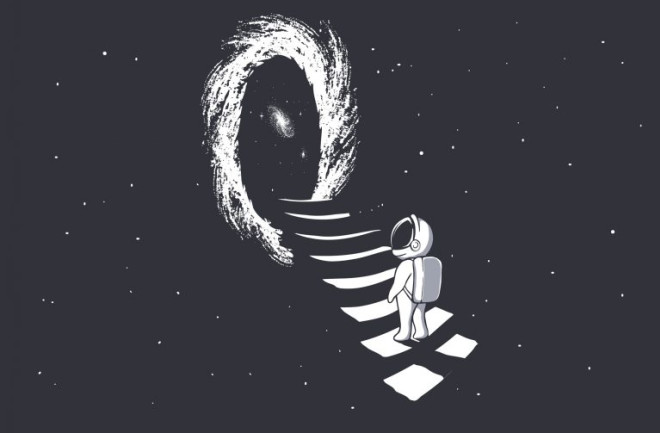
Wormholes make the best shortcuts in the universe. That’s true in a literal sense, since the theoretical things can connect distant corners of the cosmos (or even different universes), allowing a traveler to go someplace without having to visit everywhere in between.
But wormholes also present the perfect way for writers to get around that pesky speed of light, the universe’s speed limit and impediment to fast travel through the cosmos. If characters in science fiction aren’t taking months or years to travel between worlds, a wormhole is likely the reason.
Too bad, then, that as far as we know, the things don’t exist.
Historical Holes
Oh, wormholes could exist. We just don’t know whether they actually do . Or, for that matter, if they’d be useful to us as potential shortcuts.
But ever since Albert Einstein published his general theory of relativity , we’ve had the mathematical language for describing and imagining these fantastical structures. Back then, though, scientists referred to them as “one-dimensional tubes” and simply “bridges” — in fact, the term “ Einstein-Rosen bridge ” is still used semi-interchangeably with “wormhole” (the “Rosen” being Israeli physicist Nathan Rosen ).
It was American physicist John Wheeler who coined the vermicular vernacular in a 1957 Annals of Physics paper : “This analysis forces one to consider situations,” he wrote, “where there is a net flux of lines of force, through what topologists would call ‘a handle’ of the multiply-connected space, and what physicists might perhaps be excused for more vividly terming a ‘wormhole’.”
Tantalizing Physics
It’s a lucky thing, because that vivid name helps describe just what the heck we’re talking about. The curvature of space and lines of force might not mean much to most people, but who can’t imagine a worm eating its way through an apple or piece of timber? The resulting tunnel, connecting one part of the surface with another more distant part, is the perfect metaphor for something that can connect otherwise remote locations in the universe.
And, because Einstein also showed that space and time are fundamentally interconnected, traveling through a wormhole might not only take us to another far-away place , but it could even serve as a shortcut to another time .
No wonder, then, that they’ve become so popular in science fiction . In real life, the speed of light is the end of the line : Nothing with mass can ever accelerate faster. That means sunlight takes over 5 hours to get to Pluto and years to reach other star systems. And it’s the rare story that benefits from forcing its characters to sit around waiting years to get anywhere.
Wormholes, thus, are the perfect way to bypass Einstein’s speed limit, and get your heroes and villains to travel the galaxy in a reasonable time frame. Plus, they allow for the element of time travel to enter the story, all without breaking any laws of physics.
So, the real question is: Can actual people take advantage of wormholes too? The answer is… maybe?
Wither Wormholes?
The first problem for any explorer determined to survey a wormhole is simply finding one. While Einstein’s work says they can exist, we don’t currently know of any . They may actually be impossible after all, forbidden by some deeper physics that the universe obeys, but we haven’t discovered.
The second issue is that, despite years of research, scientists still aren’t really sure how wormholes would work. Can any technology ever create and manipulate them , or are they simply a part of the universe? Do they stay open forever, or are they only traversable for a limited time? And perhaps most significantly, are they stable enough to allow for human travel?
The answer to all of these: We just don’t know.
But that doesn’t mean scientists aren’t working on it. Despite the lack of actual wormholes to study, researchers can still model and test Einstein’s equations. NASA’s conducted legitimate wormhole research for decades , and a team described just this year how wormhole-based travel might be more feasible than previously thought.
That research concerned one of the most popular conceptions of wormholes, with black holes serving as one of the openings. But black holes are famously dangerous , possibly stretching apart anyone who approaches too close. It turns out, though, that some black holes might allow objects to pass through relatively easily. This would allow a traveler to explore the space beyond, and thus eliminate one of the biggest hurdles to entering such a wormhole. But again, that’s only if they exist in the first place.
So, until we either find an actual wormhole to study, or realize that they can’t help us explore the universe, we’ll have to do it the old fashioned way: By taking rockets the long way around, and taking our minds on fictional adventures.
- black holes
Already a subscriber?
Register or Log In

Keep reading for as low as $1.99!
Sign up for our weekly science updates.
Save up to 40% off the cover price when you subscribe to Discover magazine.
Human-Safe Wormholes Could Exist in the Real World, Studies Find
Pack your bags. We’re going to another galaxy.
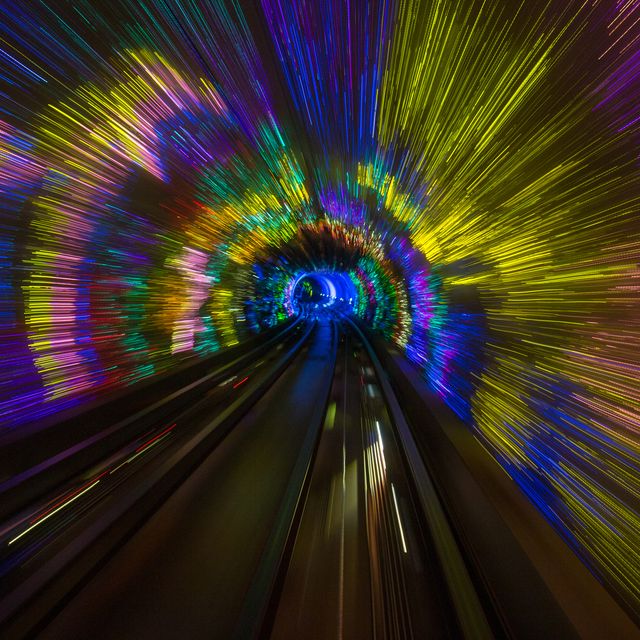
- Two separate studies published in Physical Review Letters D propose new theories for how to construct a traversable wormhole.
- Wormholes, also known as Einstein-Rosen bridges, are commonly used in sci-fi stories as a way to quickly zip between distant parts of the universe .
Sci-fi writers have long leaned on the wormhole as an important plot device. It’s a quick way to get characters from Point A to Point B across vast distances in spacetime in a matter of seconds. But are wormholes real?
🐛 You love weird science. So do we. Let’s nerd out over it together.
Theorists like Albert Einstein and Kip Thorne have been pondering the existence of these spacetime portals for decades, but so far, no one has been able to provide physical evidence of their existence until recently.
Two March 2021 studies, published in the journals Physical Review Letters and Physical Review D , propose wormholes safe enough for humans to travel through could exist in the real world after all. A third study published to the preprint server arXiv in September 2021 considers using a slightly different concept of gravity to allow safe passage through a wormhole.
One of the main arguments against the existence of wormholes suggests the portal’s narrowest part, or neck, would likely collapse under the weight of its own gravity . Some theorists say one way to sidestep this issue and prevent gravitational collapse would be to fill the wormhole with an exotic form of matter that has negative mass. But this solution isn’t a cosmological silver bullet—such a form of matter is purely theoretical.
In the first paper , an international trio of researchers led by Jose Blázquez-Salcedo of the Complutense University of Madrid has proposed an alternative way to prevent the collapse of a fragile wormhole’s neck—one that doesn’t need exotic matter to keep the wormhole propped open.
Instead, the researchers’ theoretical models, which ponder the possibility of microscopic wormholes, draw from three theories to harness the power of elementary particles : relativity theory, quantum theory, and electrodynamics.
These scientists suggest tweaking the mass and charge of fermions —fundamental building blocks of matter—could keep the cosmic thruway open. This would only work if the ratio of the total charge of the fermions to the total mass of everything inside the wormhole is greater than the practical limit set by black holes .
Now, there’s a catch: Blázquez-Salcedo and his team are talking about microscopic wormholes. They’re not exactly traversable by humans, but this is certainly one small step in a new theoretical direction.
The second paper , however, which comes from Juan Maldacena of the Institute for Advanced Study in New Jersey and Alexey Milekhin from Princeton University, does explore the theoretical existence of wormholes large enough for spacetime-surfing humans to squeeze through.
In this case, Maldacena and Milekhin have devised a wormhole that forms in five-dimensional spacetime, also known as the Randall-Sundrum model. These wormholes would look like intermediate-mass black holes to the untrained observer, the authors say.
If you hopped in this kind of wormhole, you’d experience up to 20 Gs of acceleration—an uncomfortable, albeit survivable, amount. But the authors acknowledge some practical limitations with this theory. For example, the wormhole has to be extremely clean—i.e., free from errant particles:
If particles that fall into the wormhole scatter and lose energy then they would accumulate inside, contributing some positive energy that would eventually make the wormhole collapse back into a black hole.
The last place anyone traveling through space wants to end up is at the center of a black hole. The wormhole also has to be extremely cold, the researchers write. And then there’s the small problem of actually generating the wormhole in the first place. Maldacena and Milekhin are still working on figuring out how to form one.
Needing negative energy or negative mass (exotic matter, in other words) to construct your wormhole is too much trouble. Instead, you need to tweak your understanding of gravity, according to João Luís Rosa, a physicist at University of Tartu, in Estonia. His paper on the arXiv preprint server discusses the use of a model called “generalized hybrid metric-Palatini gravity.” This concept is based on general relativity , but matter and energy, and space and time, have slightly different relationships than those predicted by general relativity. So, you would be able to build a stable wormhole by layering the entrance with double thin shells of regular matter—no exotic matter needed.
After all this fact-or-fiction speculation, what’s the good news? Theoretically, your cross-galaxy trip would only take less than a second. But if your family and friends are tracking your journey from outside the wormhole, they’ll be waiting a long time for it to end. From their perspective, your trip would last tens of thousands of years.
Looks like you’ll have to find your own ride home.
Correction, March 12, 2021: A previous version of this article mistakenly clipped short a quote from the article “Humanly traversable wormholes.” We regret the error.
Jennifer Leman is a science journalist and senior features editor at Popular Mechanics, Runner's World, and Bicycling. A graduate of the Science Communication Program at UC Santa Cruz, her work has appeared in The Atlantic, Scientific American, Science News and Nature. Her favorite stories illuminate Earth's many wonders and hazards.

.css-cuqpxl:before{padding-right:0.3125rem;content:'//';display:inline;} Deep Space .css-xtujxj:before{padding-left:0.3125rem;content:'//';display:inline;}

Astronomers Found a ‘Sleeping Giant’ Black Hole

Similar Planets Could Point Toward Alien Worlds

We May Be Living in a Variable Universe

The Universe Could Be Eternal, This Theory Says

Fugitive Stars Are Heading to Our Galaxy
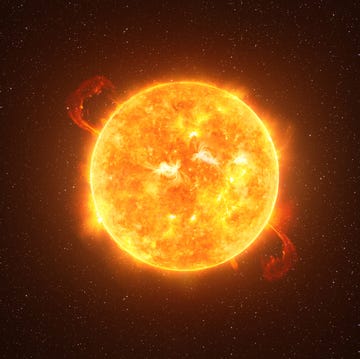
A Giant Star Looks Like It's Defying Astrophysics

Meteorite Strike Was Actually Just a Truck
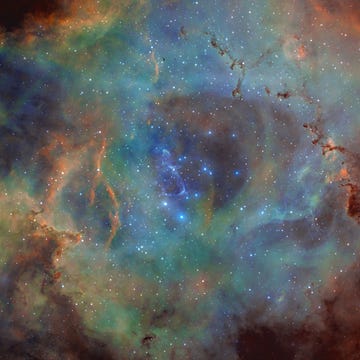
Theory Says Our Universe Is Eating Baby Universes

Astronomers Caught Dark Matter in the Cosmic Web
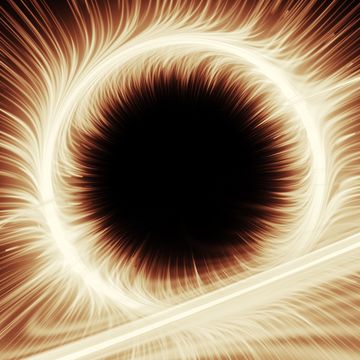
A Study Says Black Holes Can Create Space Lasers
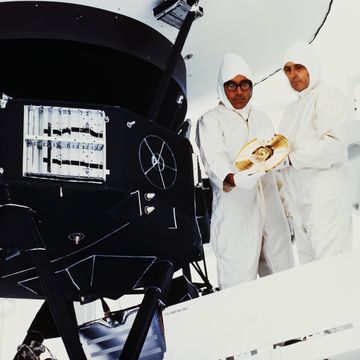
Voyager 1 Has Gone Silent in Deep Space
'Interstellar' Science: Is Wormhole Travel Possible?

Sci-fi fans who hope humanity can one day zoom to distant corners of the universe via wormholes, as astronauts do in the recent film "Interstellar," shouldn't hold their breath.
Wormholes are theoretical tunnels through the fabric of space-time that could potentially allow rapid travel between widely separated points — from one galaxy to another, for example, as depicted in Christopher Nolan's " Interstellar ," which opened in theaters around the world earlier this month.
While wormholes are possible according to Einstein's theory of general relativity, such exotic voyages will likely remain in the realm of science fiction, said renowned astrophysicist Kip Thorne of the California Institute of Technology in Pasadena, who served as an adviser and executive producer on "Interstellar." [ 'Interstellar': A Space Epic in Pictures ]
"The jury is not in, so we just don't know," Thorne, one of the world's leading authorities on relativity, black holes and wormholes, told Space.com. "But there are very strong indications that wormholes that a human could travel through are forbidden by the laws of physics. That's sad, that's unfortunate, but that's the direction in which things are pointing."
The major barrier has to do with a wormhole's instability, he said.
" Wormholes — if you don't have something threading through them to hold them open — the walls will basically collapse so fast that nothing can go through them," Thorne said.
Holding wormholes open would require the insertion of something that anti-gravitates — namely, negative energy. Negative energy has been created in the lab via quantum effects, Thorne said: One region of space borrows energy from another region that didn't have any to begin with, creating a deficit.
Get the Space.com Newsletter
Breaking space news, the latest updates on rocket launches, skywatching events and more!

"So it does happen in physics," he said. "But we have very strong, but not firm, indications that you can never get enough negative energy that repels and keeps the wormhole's walls open; you can never get enough to do that."
Furthermore, traversable wormholes — if they can exist at all — almost certainly cannot occur naturally, Thorne added. That is, they must be created by an advanced civilization.
And that's exactly what happens in "Interstellar": Mysterious beings construct a wormhole near Saturn, allowing a small band of pioneers, led by a former farmer named Cooper (played by Matthew McConaughey) to journey far afield in search of a new home for humanity, whose existence on Earth is threatened by global crop failures.
Anyone interested in learning more about the science of "Interstellar" — which also features gravitational time dilation and depictions of several alien planets orbiting close to a supermassive black hole — can check out Thorne's new book, which is called, appropriately enough, " The Science of 'Interstellar.' "
Further, the California-based Kavli Foundation will host a webcast Wednesday (Nov. 26) in which physicists discuss the movie's science .
Wormholes have been a staple of science fiction for decades. Interestingly, Thorne said that one of the genre's most famous titles helped inspire scientists to try to better understand the hypothetical structures.
"The modern research on the physics of wormholes largely stems from the movie 'Contact,' from conversations I had with [renowned late scientist] Carl Sagan — actually, when he was writing his novel 'Contact,'" Thorne said.
"Contact" features traversable wormholes. The novel came out in 1985, while the movie (which also stars Matthew McConaughey, apparently a wormhole connoisseur) was released in 1997.
Follow Mike Wall on Twitter @michaeldwall and Google+ . Follow us @Spacedotcom , Facebook or Google+ . Originally published on Space.com.
Join our Space Forums to keep talking space on the latest missions, night sky and more! And if you have a news tip, correction or comment, let us know at: [email protected].

Michael Wall is a Senior Space Writer with Space.com and joined the team in 2010. He primarily covers exoplanets, spaceflight and military space, but has been known to dabble in the space art beat. His book about the search for alien life, "Out There," was published on Nov. 13, 2018. Before becoming a science writer, Michael worked as a herpetologist and wildlife biologist. He has a Ph.D. in evolutionary biology from the University of Sydney, Australia, a bachelor's degree from the University of Arizona, and a graduate certificate in science writing from the University of California, Santa Cruz. To find out what his latest project is, you can follow Michael on Twitter.
Lego Marvel The Amazing Spider-Man review
Lego Star Wars Millennium Falcon (2024) review
NASA astronaut and director Ellen Ochoa awarded Presidential Medal of Freedom
Most Popular
- 2 Happy National Astronaut Day 2024! Holiday's founder talks importance of honoring America's spaceflyers (exclusive)
- 3 After an 'emotional rollercoaster,' NASA astronauts are ready to fly on Boeing Starliner
- 4 Boeing Starliner 1st astronaut flight: Live updates
- 5 X-ray spacecraft reveals odd 'Cloverleaf' radio circle in new light (image)
Travel through wormholes is possible, but slow
A Harvard physicist has shown that wormholes can exist: tunnels in curved space-time, connecting two distant places, through which travel is possible.
But don't pack your bags for a trip to other side of the galaxy yet; although it's theoretically possible, it's not useful for humans to travel through, said the author of the study, Daniel Jafferis, from Harvard University, written in collaboration with Ping Gao, also from Harvard and Aron Wall from Stanford University.
"It takes longer to get through these wormholes than to go directly, so they are not very useful for space travel," Jafferis said. He will present his findings at the 2019 American Physical Society April Meeting in Denver.
Despite his pessimism for pan-galactic travel, he said that finding a way to construct a wormhole through which light could travel was a boost in the quest to develop a theory of quantum gravity.
"The real import of this work is in its relation to the black hole information problem and the connections between gravity and quantum mechanics," Jafferis said.
The new theory was inspired when Jafferis began thinking about two black holes that were entangled on a quantum level, as formulated in the ER=EPR correspondence by Juan Maldacena from the Institute for Advanced Study and Lenny Susskind from Stanford. Although this means the direct connection between the black holes is shorter than the wormhole connection -- and therefore the wormhole travel is not a shortcut -- the theory gives new insights into quantum mechanics.
"From the outside perspective, travel through the wormhole is equivalent to quantum teleportation using entangled black holes," Jafferis said.
Jafferis based his theory on a setup first devised by Einstein and Rosen in 1935, consisting of a connection between two black holes (the term wormhole was coined in 1957). Because the wormhole is traversable, Jafferis said, it was a special case in which information could be extracted from a black hole.
"It gives a causal probe of regions that would otherwise have been behind a horizon, a window to the experience of an observer inside a spacetime, that is accessible from the outside," said Jafferis.
To date, a major stumbling block in formulating traversable wormholes has been the need for negative energy, which seemed to be inconsistent with quantum gravity. However, Jafferis has overcome this using quantum field theory tools, calculating quantum effects similar to the Casimir effect.
"I think it will teach us deep things about the gauge/gravity correspondence, quantum gravity, and even perhaps a new way to formulate quantum mechanics," Jafferis said.
The presentation, "Traversable wormholes" will took place on Saturday, April 13. ABSTRACT: http://meetings.aps.org/Meeting/APR19/Session/B02.2
- Black Holes
- Astrophysics
- Space Probes
- Space Exploration
- Introduction to general relativity
- Spitzer space telescope
- Presentism (philosophy of time)
- Albert Einstein
- Gravitational wave
- Barred spiral galaxy
Story Source:
Materials provided by American Physical Society . Note: Content may be edited for style and length.
Cite This Page :
Explore More
- Universal, Long-Lasting Flu Shot
- Better Vision from CRISPR Gene Editing Trial
- Why Venus Has Almost No Water
- Stellar Light Surrounding Ancient Quasars
- New Discoveries About Jupiter
- Simulations Support Dark Matter Theory
- 3D Printed Programmable Living Materials
- Emergence of Animals: Magnetic Field Collapse
- Ice Shelves Crack from Weight of Meltwater Lakes
- Countries' Plans to Remove CO2 Not Enough
Trending Topics
Strange & offbeat.
You are using an outdated browser. Please upgrade your browser to improve your experience.
Science on Screen
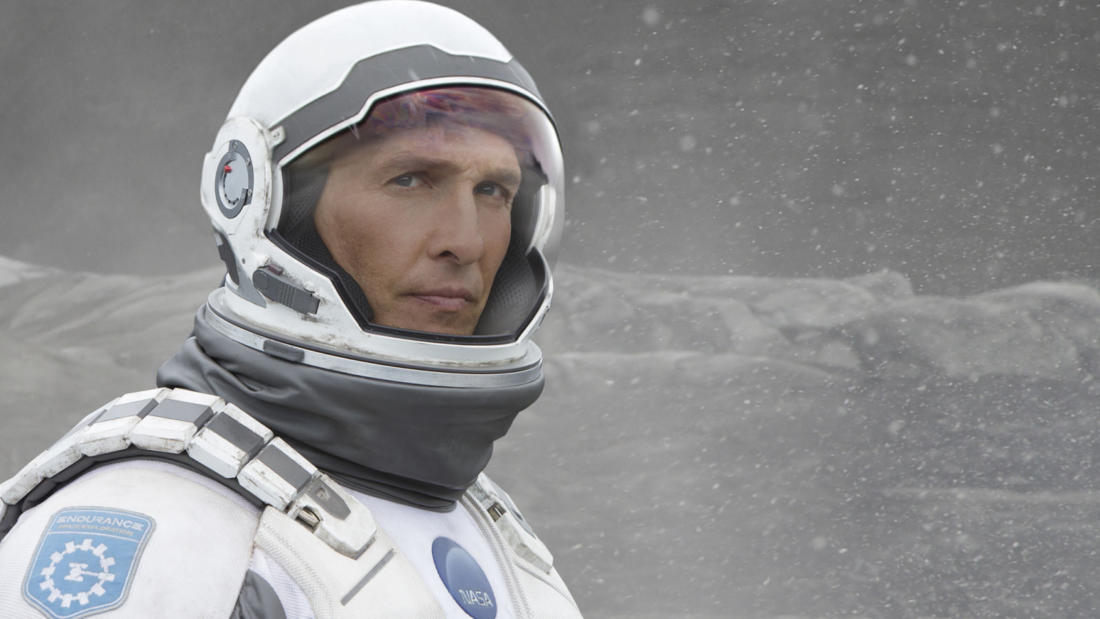
Gateway Film Center Columbus, OH
Samir D. Mathur
Professor of Physics, The Ohio State University
David H. Weinberg
Chair of the Astronomy Department, The Ohio State University
Interstellar— Wormholes and theories of interstellar travel
Program description.
Theoretical physicist Samir Mathur and astronomer David Weinberg in conversation about the film and its science.
Presented At
Film synopsis.
A team of explorers travel through a wormhole in space in an attempt to ensure humanity's survival.
In Earth's future, a global crop blight and second Dust Bowl are slowly rendering the planet uninhabitable. Professor Brand (Michael Caine), a brilliant NASA physicist, is working on plans to save mankind by transporting Earth's population to a new home via a wormhole. But first, Brand must send former NASA pilot Cooper (Matthew McConaughey) and a team of researchers through the wormhole and across the galaxy to find out which of three planets could be mankind's new home.
Photo courtesy of PHOTOFEST
Interstellar: explaining the science behind wormholes
Interstellar , the new sci-fi film by Christopher Nolan , chronicles the adventures of a group of scientist explorers who use newly discovered wormholes to travel through different dimensions and cover vast distances in order to bring back food to their dying planet.
The film was made with the consultation of one of astrophysics' most acclaimed scientists, 74-year-old emeritus professor Kip Thorne, who argues that, in theory it might be possible to stabilise a wormhole or Einstein-Rosen bridges as they are also known, and use it to cross space and time, or to cross over into other universes.
"Wormholes would allow faster than light travel, or we would be able to cheat a little bit, and break the speed of the light," said physicist Dr Simon Foster.
Watch Dr Foster explain what you would need to do to create such a wormhole, what it might look like and what could be on the other side.
- Black holes
- Facebook Icon
- WhatsApp Icon

Universe Today
Space and astronomy news
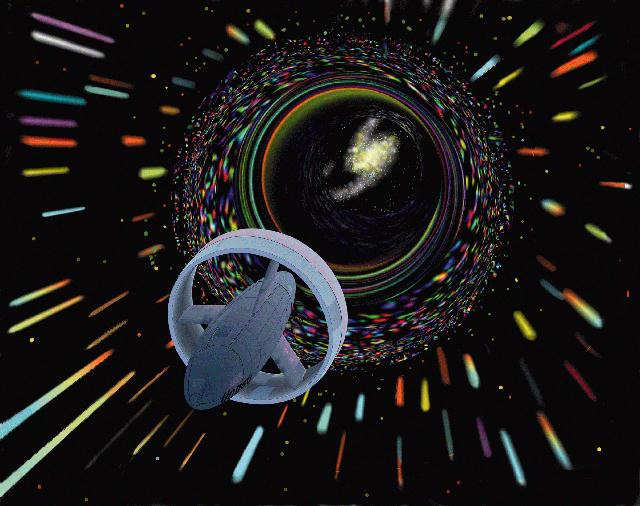
You Could Travel Through a Wormhole, but it’s Slower Than Going Through Space
Special Relativity. It’s been the bane of space explorers, futurists and science fiction authors since Albert Einstein first proposed it in 1905. For those of us who dream of humans one-day becoming an interstellar species, this scientific fact is like a wet blanket. Luckily, there are a few theoretical concepts that have been proposed that indicate that Faster-Than-Light (FTL) travel might still be possible someday.
A popular example is the idea of a wormhole: a speculative structure that links two distant points in space time that would enable interstellar space travel. Recently, a team of Ivy League scientists conducted a study that indicated how “traversable wormholes” could actually be a reality. The bad news is that their results indicate that these wormholes aren’t exactly shortcuts, and could be the cosmic equivalent of “taking the long way”!
Originally, the theory of wormholes was proposed as a possible solution to the field equations of Einstein’s Theory of General Relativity (GR). Shortly after Einstein published the theory in 1915, German physicists Karl Schwarzschild found a possible solution that not only predicted the existence of black holes, but of corridors connecting them.
Unfortunately, Schwarzschild found that any wormhole connecting two black holes would collapse too quickly for anything to cross from one end to the other. The only way they could be traversable would be if they were stabilized by the existence of exotic matter with negative energy density. Daniel Jafferis , the Thomas D. Cabot Associate Professor of Physics at Harvard University, had a different take.
As he described his analysis during the 2019 April meeting of the American Physical Society in Denver, Colorado:
“The prospect of traversable wormhole configurations has long been a source of fascination. I will describe the first examples that are consistent in a UV completable theory of gravity, involving no exotic matter. The configuration involves a direct connection between the two ends of the wormhole. I will also discuss its implications for quantum information in gravity, the black hole information paradox, and its relation to quantum teleportation.”
For the purposes of this study, Jafferis examined the work performed by Einstein and Nathan Rosen in 1935. Looking to expand upon the work of Schwarszchild and other scientists seeking solutions to GR, they proposed the possible existence of “bridges” between two distant points in space time (known as “Einstein–Rosen bridges” or “wormholes”) that could theoretically allow for matter and objects to pass between them.
By 2013, this theory was used by theoretical physicists Leonard Susskind and Juan Maldacena as a possible resolution for GR and “quantum entanglement”. Known as the ER=EPR conjecture, this theory suggests that wormholes are why an elementary particles state can become entangled with that of a partner, even if they are separated by billions of light years.
It was from here that Jafferis developed his theory, postulating that wormholes could actually be traversed by light particles (aka. photons). To test this, Jafferis conducted an analysis with the assistance with Ping Gao and Aron Wall (a Harvard graduate student and Stanford University research scientist, respectively).
What they found was that while it is theoretically possible fir light to traverse a wormhole, they are not exactly the cosmic shortcut we were all hoping for them to be. As Jafferis explained in an AIP press statement , “It takes longer to get through these wormholes than to go directly, so they are not very useful for space travel.”
Basically, the results of their analysis showed that a direct connection between black holes is shorter than that of a wormhole connection. While this certainly sounds like bad news to people who are excited by the prospect of interstellar (and intergalactic) travel someday, the good news is that this theory provides some new insight into the realm of quantum mechanics.
“The real import of this work is in its relation to the black hole information problem and the connections between gravity and quantum mechanics,” said Jafferis. The “problem” he refers to is known as the Black Hole Information Paradox , something that astrophysicists have been struggling with since 1975, when Stephen Hawking discovered that black holes have a temperature and slowly leak radiation (aka. Hawking radiation).
This paradox relates to how black holes are able to preserve any information that passes into them. Even though any matter accreted onto their surface would compressed to the point of singularity, the matter’s quantum state at the time of its compression would be preserved thanks to time dilation (it becomes frozen in time).
But if black holes lose mass in the form of radiation and eventually evaporate, this information will eventually be lost. By developing a theory through which light can travel through a black hole, this study could represent a means of resolving this paradox. Rather than radiation from black holes representing a loss of mass-energy, it could be that Hawking Radiation is actually coming from another region of space time.
It may also help scientists who are attempting to develop a theory that unifies gravity with quantum mechanics (aka. quantum gravity, or a “Theory of Everything”). This is due to the fact that Jafferis used quantum field theory tools to postulate the existence of traversable black holes, thus doing away with the need for exotic particles and negative mass (which appear inconsistent with quantum gravity). As Jafferis explained :
“It gives a causal probe of regions that would otherwise have been behind a horizon, a window to the experience of an observer inside a spacetime, that is accessible from the outside. I think it will teach us deep things about the gauge/gravity correspondence, quantum gravity, and even perhaps a new way to formulate quantum mechanics.”
As always, breakthroughs in theoretical physics can be a two-edged sword, giving with one hand and taking away with the other. So while this study may have thrown more cold water on the dream of FTL travel, it could very well help us unlock some of the Universe’s deeper mysteries. Who knows? Maybe some of that knowledge will allow us to find a way around this stumbling block known as Special Relativity!
Further Reading: Newswise , APS Physics
Share this:
- Click to share on Facebook (Opens in new window)
- Click to share on Twitter (Opens in new window)
- Click to share on Reddit (Opens in new window)
share this!
April 15, 2019
Travel through wormholes is possible, but slow
by American Institute of Physics
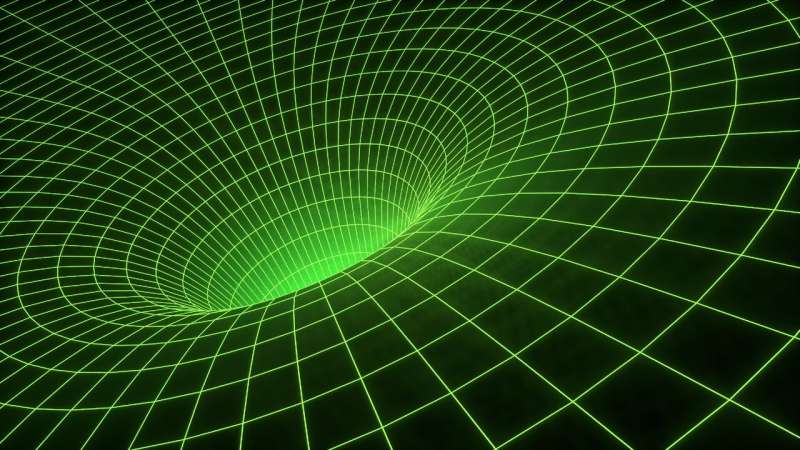
A Harvard physicist has shown that wormholes can exist: tunnels in curved space-time, connecting two distant places, through which travel is possible.
But don't pack your bags for a trip to other side of the galaxy yet; although it's theoretically possible, it's not useful for humans to travel through, said the author of the study, Daniel Jafferis, from Harvard University, written in collaboration with Ping Gao, also from Harvard and Aron Wall from Stanford University.
"It takes longer to get through these wormholes than to go directly, so they are not very useful for space travel ," Jafferis said. He will present his findings at the 2019 American Physical Society April Meeting in Denver.
Despite his pessimism for pan-galactic travel, he said that finding a way to construct a wormhole through which light could travel was a boost in the quest to develop a theory of quantum gravity.
"The real import of this work is in its relation to the black hole information problem and the connections between gravity and quantum mechanics ," Jafferis said.
The new theory was inspired when Jafferis began thinking about two black holes that were entangled on a quantum level, as formulated in the ER=EPR correspondence by Juan Maldacena from the Institute for Advanced Study and Lenny Susskind from Stanford. Although this means the direct connection between the black holes is shorter than the wormhole connection—and therefore the wormhole travel is not a shortcut—the theory gives new insights into quantum mechanics.
"From the outside perspective, travel through the wormhole is equivalent to quantum teleportation using entangled black holes," Jafferis said.
Jafferis based his theory on a setup first devised by Einstein and Rosen in 1935, consisting of a connection between two black holes (the term wormhole was coined in 1957). Because the wormhole is traversable, Jafferis said, it was a special case in which information could be extracted from a black hole.
"It gives a causal probe of regions that would otherwise have been behind a horizon, a window to the experience of an observer inside a spacetime, that is accessible from the outside," said Jafferis.
To date, a major stumbling block in formulating traversable wormholes has been the need for negative energy, which seemed to be inconsistent with quantum gravity. However, Jafferis has overcome this using quantum field theory tools, calculating quantum effects similar to the Casimir effect.
"I think it will teach us deep things about the gauge/gravity correspondence, quantum gravity, and even perhaps a new way to formulate quantum mechanics," Jafferis said.
Provided by American Institute of Physics
Explore further
Feedback to editors

Chimps shown to learn and improve tool-using skills even as adults

Advanced experimental setup expands the hunt for hidden dark matter particles

New research confirms that Beethoven had lead poisoning—but it didn't kill him

How NASA's Roman mission will hunt for primordial black holes

Geologists reveal mysterious and diverse volcanism in lunar Apollo Basin, Chang'e-6 landing site
2 hours ago

Using algorithms to decode the complex phonetic alphabet of sperm whales

Researchers 'unzip' 2D materials with lasers
3 hours ago

How a 'conductor' makes sense of chaos in early mouse embryos

Decoding development: mRNA's role in embryo formation

Study identifies early warning signals for the end of the African humid period
4 hours ago
Relevant PhysicsForums posts
How does phase of merging sines affect overall periodic tones, interactive visualization of the hopf fibration.
May 6, 2024
Too much energy -- thought experiment
May 5, 2024
Calculating vacuum -- These numbers do not make sense
May 3, 2024
Density fluctuations and the color of the sky
May 1, 2024
Circular motion as a result of the Lorentz force
Apr 30, 2024
More from Other Physics Topics
Related Stories

Scientists dismiss the idea of travel through wormholes
Dec 14, 2018

Physicist describes the shape of a wormhole
Oct 17, 2018

'Spooky action' builds a wormhole between 'entangled' quantum particles
Dec 3, 2013
Escaping gravity's clutches: The black hole breakout
Aug 11, 2011

Creation of entanglement simultaneously gives rise to a wormhole
Dec 5, 2013

Listening to quantum radio
Mar 8, 2019
Recommended for you

Scientists directly measure a key reaction in neutron star binaries

The BREAD Collaboration is searching for dark photons using a coaxial dish antenna

New work reveals the 'quantumness' of gravity

Laser excitation of Th-229 nucleus: New findings suggest classical quantum physics and nuclear physics can be combined
Apr 29, 2024

Large Hadron Collider experiment zeroes in on magnetic monopoles
Apr 26, 2024
Let us know if there is a problem with our content
Use this form if you have come across a typo, inaccuracy or would like to send an edit request for the content on this page. For general inquiries, please use our contact form . For general feedback, use the public comments section below (please adhere to guidelines ).
Please select the most appropriate category to facilitate processing of your request
Thank you for taking time to provide your feedback to the editors.
Your feedback is important to us. However, we do not guarantee individual replies due to the high volume of messages.
E-mail the story
Your email address is used only to let the recipient know who sent the email. Neither your address nor the recipient's address will be used for any other purpose. The information you enter will appear in your e-mail message and is not retained by Phys.org in any form.
Newsletter sign up
Get weekly and/or daily updates delivered to your inbox. You can unsubscribe at any time and we'll never share your details to third parties.
More information Privacy policy
Donate and enjoy an ad-free experience
We keep our content available to everyone. Consider supporting Science X's mission by getting a premium account.
E-mail newsletter
This page has been archived and is no longer updated

The Missing Piece: Are Wormholes the Key to Time Travel?

Time travel -- it's a concept we're all too familiar with. From Hollywood Movies (shout out to Back to the Future) to theoretical physics, many theories have circulated regarding the bewildering topic of time travel. However, recently students at the California Institute of Technology1 have shed new light on a relatively dated theory: that wormholes may be the missing piece in the seemingly unsolvable puzzle behind time travel. So, step aside Doc Brown, because we're going to explore how a unique and mysterious part of our universe- the wormhole- connects to traveling through time!
Just like many principles in Physics, this concept finds its base in Einstein's Theory of General Relativity (for some background on this topic, view our previous blog post, "What happens to Matter inside a Black Hole?"). Basically, the theory attributes the characteristics of a wormhole to its incredibly high velocity. Similar to a black hole, a wormhole would compress an entering object to the size of a singularity and accelerate it to immeasurable speeds through the "throat" of the wormhole to the other side of the funnel. So, for now, think of a wormhole as a black hole that has a start and end point.2
Now, this is where the physics becomes complex. We know that a wormhole can basically "teleport" compressed objects at super speeds from one end to another, but how does that explain the time travel aspect? Well, the concept of time dilation can explain that. Time dilation is the relative difference in the passage of time between two entities due to a stark difference in either gravity or relative velocity. In the case of the wormhole, both are in play, which only compounds the effects. For a tangible example to grasp, let's look to the astronauts aboard the International Space Station. After 6 months aboard the ISS (where there is less gravity, but greater velocity of movement), these astronauts have actually aged .007 seconds less than the crew stationed on Earth.3 While this seems insignificant, we have to remember that because the velocity is increased but the gravity is decreased, each is actually mitigating the effects of the other. However, in a wormhole, where the effects of both gravity and velocity are exponentially amplified AND working in tandem, their relativistic effects are enormous.4
This graphic portrays an accurate depiction of velocities' effect on time dilation: http://upload.wikimedia.org/wikipedia/commons/7/72/Nonsymmetric_velocity_time_dilation.gif
Now that we have an understanding of time dilation, we want to leave you with this example. Imagine two test subjects at each side of a wormhole in the year 1995. One mouth of the wormhole has been accelerated to a point where relativistic effects (i.e. time dilation) apply significantly and the other mouth is stationary. When the two subjects pass through their respective mouths, they end up at where their counterpart stood... but at different times! The accelerated mouth would land its test subject in, let's say, 2000. However, the stationary mouth would place its test subject in a later year - we'll call it 2005- since the accelerated mouth exists in a different time caused by time dilation. The time travel becomes evident when we consider the following: what if the test subject who landed in 2005 stepped back into the mouth? They would end up in the year 2000, or 5 years in the past! A bit of manipulation, therefore, could technically transport this subject to any point in time between 2000 and 2005.5
Unfortunately, scientists have been unable to totally grasp how we could adapt the power of a wormhole into time machine-esq technology. We have yet to even theorize how we could accelerate a wormhole to relativistic speeds. Given that this is another theoretical aspect of our known universe, testing is extremely limited and all postulates have very little opportunity for tangible proof. What is certain, though, is that the advances we've made thus far in the field have brought us several pieces closer to solving the time traveler's puzzle!


Email your Friend
- January 23, 2014 The Search for the God Particle
- January 21, 2014 Can We Make the Jump?
- September 07, 2013 An Enlightening View of Solar Eclipses
- September 02, 2013 Sunny Side Down: The Future Destruction of the Sun
- August 28, 2013 The Missing Piece: Are Wormholes the Key to Tim...
- July 30, 2013 What Happens to Matter Inside a Black Hole?
© 2014 Nature Education
- Press Room |
- Terms of Use |
- Privacy Notice |

Into The Wormhole
Try travelling from your room to outer space through a wormhole! Walk a circle around the wormhole to see the rest of the room and make sure to take a look around when you’re inside.
If you want to know more about wormholes, watch our latest video!
Use WASD + mouse controls to move around on PC, and drag up, left and right to move forward and rotate on mobile devices. Side note: On some mobile devices and on PCs with certain GPUs the rendering might be rather grainy. If it happens to you: sorry about that!
Code by sirxemic. Prepared by Matt Caplan.
Click anywhere to continue

IMAGES
VIDEO
COMMENTS
In a 1987 paper about travel via wormhole, he notes that the throat of a Kerr wormhole contains a region called a Cauchy horizon that is very unstable. The math says that as soon as anything, even ...
Well, yes, you can! You just never saw a game that extreme before. Time-travel research is like that. We're testing the laws of physics by looking at extreme conditions. There's nothing logically ...
Cast. Matthew McConaughey. Anne Hathaway. Jessica Chastain. Michael Caine. A team of explorers travel through a wormhole in space in an attempt to ensure humanity's survival. In Earth's future, a global crop blight and second Dust Bowl are slowly rendering the planet uninhabitable. Professor Brand (Michael Caine), a brilliant NASA physicist, is ...
Interstellar: Directed by Christopher Nolan. With Ellen Burstyn, Matthew McConaughey, Mackenzie Foy, John Lithgow. A team of explorers travel through a wormhole in space in an attempt to ensure humanity's survival.
An astrophysicist explains these shortcuts through space-time. The term wormhole was coined in 1957 by American physicist John Wheeler. He named them after the literal holes worms leave behind in ...
January 3, 2023 at 9:00 am. If you ever happen to fall through a wormhole in space, you won't be coming back. It will snap shut behind you. But you may have just enough time to send a message to ...
Wormholes could offer a path to the most distant places in the universe. Wormholes make the best shortcuts in the universe. That's true in a literal sense, since the theoretical things can ...
In 2015 Italian researchers suggested there could be a wormhole lurking in the center of the Milky Way some 27,000 light-years away. Ordinarily, a wormhole would need some exotic matter to keep it ...
Journey through a wormhole "Interstellar" is set at some nebulous point in the not-too-distant future, when global crop failures threaten humanity with extinction. So a small band of explorers, led by a pilot-turned-farmer named Cooper (McConaughey), blasts off to search for an exoplanet that could serve as a new home for the human race.
As Jafferis explained in an AIP press statement, "It takes longer to get through these wormholes than to go directly, so they are not very useful for space travel." Basically, the results of their analysis showed that a direct connection between black holes is shorter than that of a wormhole connection. While this certainly sounds like bad news ...
An artist's image of a hypothetical spacecraft that could be used to travel through a wormhole. ... If an explorer went back in time and killed his or her grandfather, that person could not be ...
NASA's conducted legitimate wormhole research for decades, and a team described just this year how wormhole-based travel might be more feasible than previously thought. That research concerned one of the most popular conceptions of wormholes, with black holes serving as one of the openings. But black holes are famously dangerous, possibly ...
Physicists Just Figured Out How Wormholes Could Enable Time Travel. Physics 16 July 2023. By Mike McRae. (gremlin/Getty Images) Theoretical physicists have a lot in common with lawyers. Both spend a lot of time looking for loopholes and inconsistencies in the rules that might be exploited somehow. Valeri P. Frolov and Andrei Zelnikov from the ...
Sagan wanted to feature wormholes in the novel, so asked his friend Kip Thorne to look at wormhole solutions to Einstein's equations. Shortly after, Thorne proposed the idea of a traversable wormhole that would allow an explorer to travel through a wormhole in both directions from one part of the universe to another very quickly.
Two March 2021 studies, published in the journals Physical Review Letters and Physical Review D, propose wormholes safe enough for humans to travel through could exist in the real world after all ...
A poster for the 2014 film "Interstellar" shows the spaceship Endurance flying through a wormhole. ... Wormhole travel across the universe and supergiant black holes are just some of the wonders ...
Aug. 12, 2021 —. Sep. 24, 2020 —. A physicist has shown that wormholes can exist: tunnels in curved space-time, connecting two distant places, through which travel is possible. But don't pack ...
A team of explorers travel through a wormhole in space in an attempt to ensure humanity's survival. In Earth's future, a global crop blight and second Dust Bowl are slowly rendering the planet uninhabitable. Professor Brand (Michael Caine), a brilliant NASA physicist, is working on plans to save mankind by transporting Earth's population to a ...
Interstellar, the new sci-fi film by Christopher Nolan, chronicles the adventures of a group of scientist explorers who use newly discovered wormholes to travel through different dimensions and ...
What they found was that while it is theoretically possible fir light to traverse a wormhole, they are not exactly the cosmic shortcut we were all hoping for them to be. As Jafferis explained in ...
Credit: CC0 Public Domain. A Harvard physicist has shown that wormholes can exist: tunnels in curved space-time, connecting two distant places, through which travel is possible. But don't pack ...
Similar to a black hole, a wormhole would compress an entering object to the size of a singularity and accelerate it to immeasurable speeds through the "throat" of the wormhole to the other side ...
Into The Wormhole. Try travelling from your room to outer space through a wormhole! Walk a circle around the wormhole to see the rest of the room and make sure to take a look around when you're inside. If you want to know more about wormholes, watch our latest video! Controls